Interview 055 • Oct 12th 2016
- Interview by Lou Noble,
- Photos of Sacha Lecca by Tim Soter
About Sacha Lecca
Sacha Lecca is currently Deputy Photo Editor at Rolling Stone magazine, working with the storied magazine since 2007.
Links
Foreword
The definition of a photographer is always an interesting topic.
Is it merely someone who takes photos? Is it someone who is paid to take photos? Or is it a title that holds a bit more reverence? Someone who creates something lasting, worthwhile, memorable...
In this sliding scale of definition Sacha Lecca finds himself on the outskirts of what he may define as a photographer. As Deputy Photo Editor at Rolling Stone, he's probably more of a photographer than most of us will ever be.
- Agustin
This interview has been edited for clarity and content.
Interview
Thanks for doing this! How are you?
I’m good, I’m a little rough today.
Hahaha, it is Sunday.
And I worked a little last night, so.
Oh wow. What are your hours normally like?
Hard to say. I want to say they’re flexible, but they’re not flexible, they’re overwhelming.
Yeah!
It’s supposed to be a normal 10-6 thing, but we come out every two weeks, and so that second week we all stay pretty late, each night. We try and divide it up amongst us, but now us is just two. It’s two of us plus my boss, so, yeah, it can get kind of late. I think the latest I’ve stayed there is until 3, 3:30, 4.
Okay, yeah.
That hasn’t happened in a while, but I also have this annoying habit of showing up really early.
Hahahaha.
It’s just so nice to be there when there’s no one around, and what happens is, I start to get frustrated by it, by the time everyone is supposed to be there I’m like, “Where is everyone?”
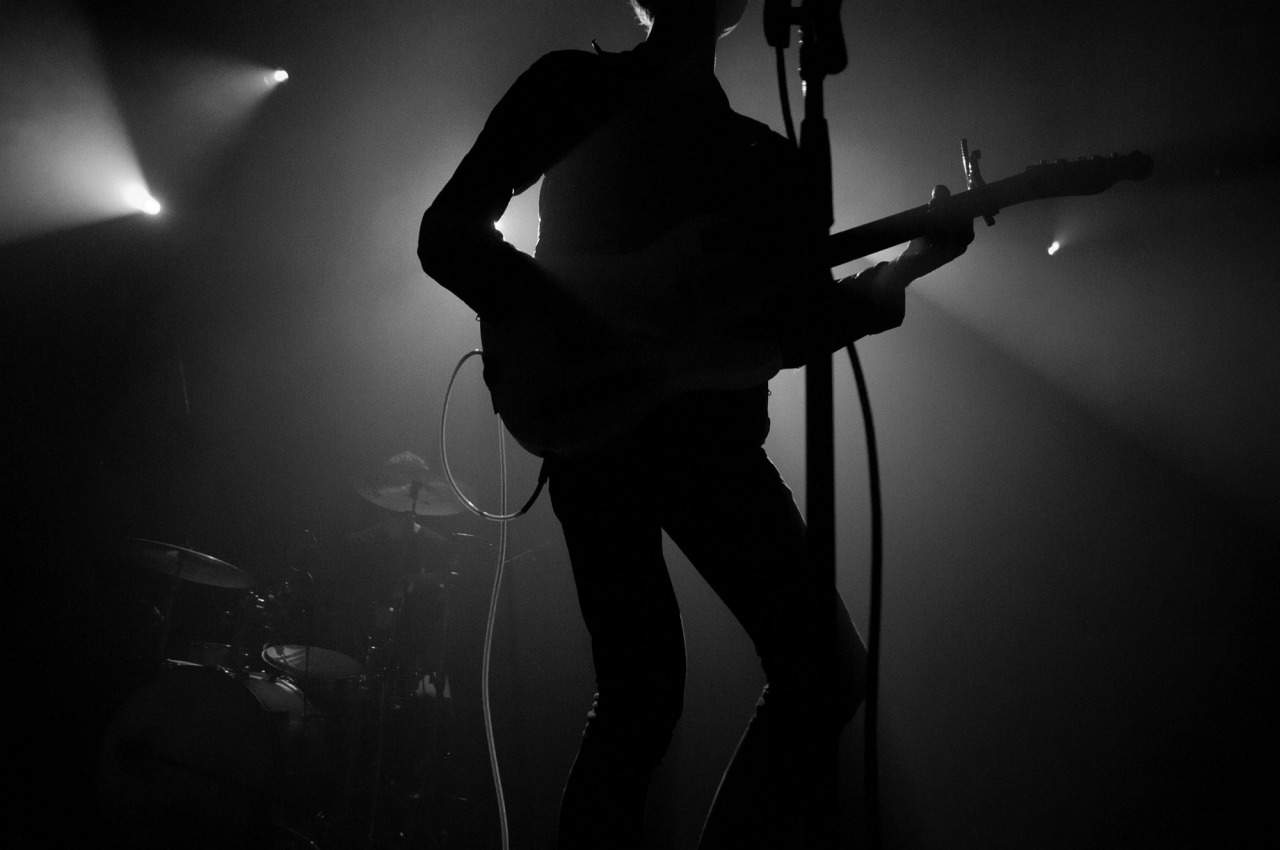
(Photos: Sacha Lecca) Drowners for Rolling Stone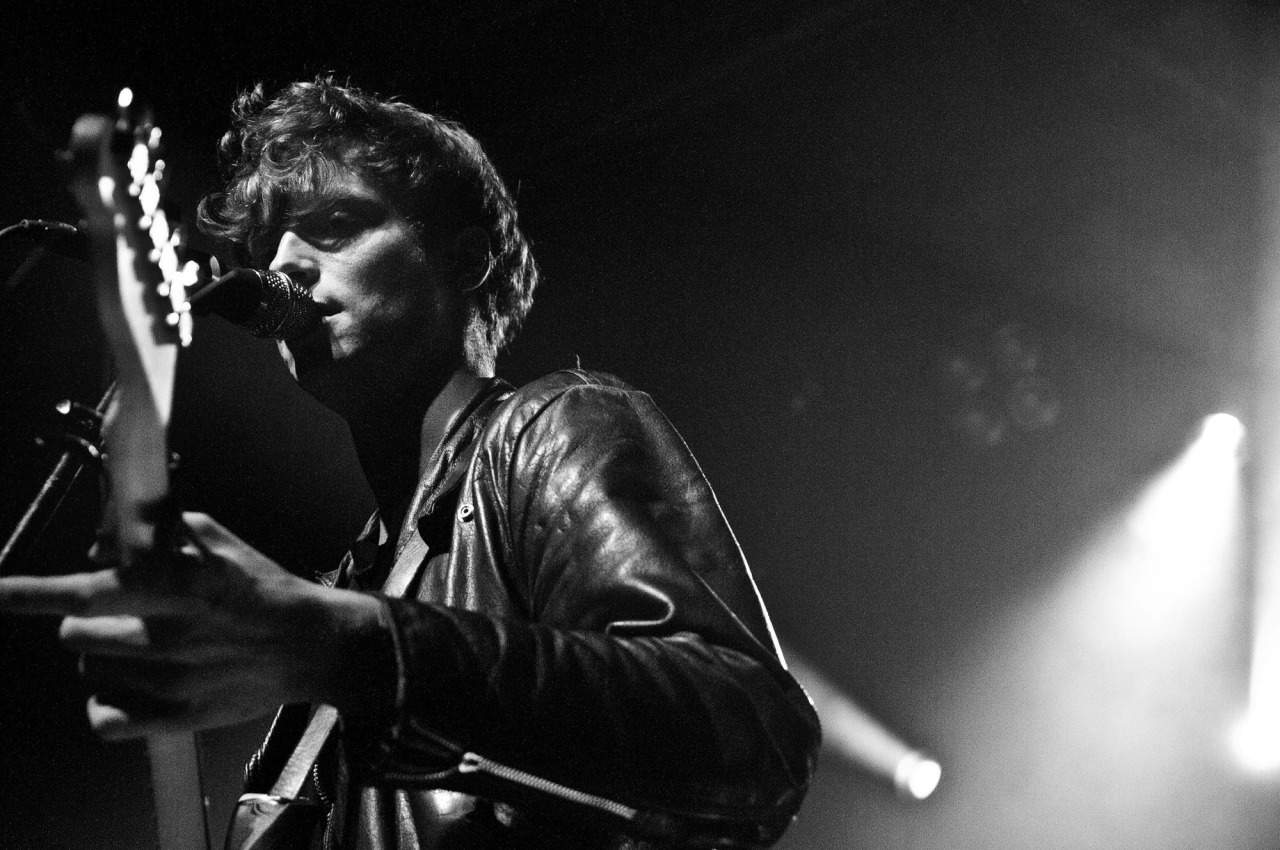
Yeah.
But yeah, I like being on my own there. So yeah, it can be crazy, I mean, with a lot of the news that we’ve been dealing with, with Muhammed Ali dying and Merle Haggard dying…
Like, these big names passing away that are going to get covered in a big way in the magazine, we kind of stop what we’re doing, and kind of then go into a higher gear and like put out a really nice package, sometimes a special issue, as well.
Right.
So yeah, it’s kind of exhausting. Those scenarios take a lot out of a diminished staff, already, and there’s been a lot of them this year, so its been like…I’m wrecked.
Nobody thinks about Rolling Stone when these people die. In terms of the work you will now have to do.
Yeah, I mean…
I always expect a Rolling Stone memorial issue to come out for a David Bowie, or an Ali, but it never occurred to me, like, “These guys got to go back to work and put aside whatever they’re doing.”
Well yeah, traditionally, since they do come out every two weeks, there’s a lot of things that we’re working on in advance, so that stuff gets put on hold, and a lot of that could be something that’s been worked over a lot, and we just have to either, I mean, stuff gets killed in those situations, but sometimes they can move over to the next issue, or a future issue. In terms of the hours, I do end up shooting a lot, too, which is often very late at night. And it’s not necessarily a required feature of my job, but it’s something that I do, and a co-worker does, often on our own, to cover bands that we like, and also bands that we know that Rolling Stone will be interested in.
Right.
Usually there’s some cross over there.
Do you think that the fact that your work is being used in Rolling Stone, do you think that’s a function of the diminished staff, that it’s almost sometimes more convenient for you taking good photos to be used, rather than going out and find other photographers?
Yeah, that’s a great question.
I worked for 12 hours on it!
Okay ahahahha! My career in working with magazines started in ’94, budgets were different, and the ability to make assignments was a lot better. And at the time, it was considered very bad form to have photo editors take photos for the magazine.
Right.
Because that was…it was considered taking something away from a working photographer.
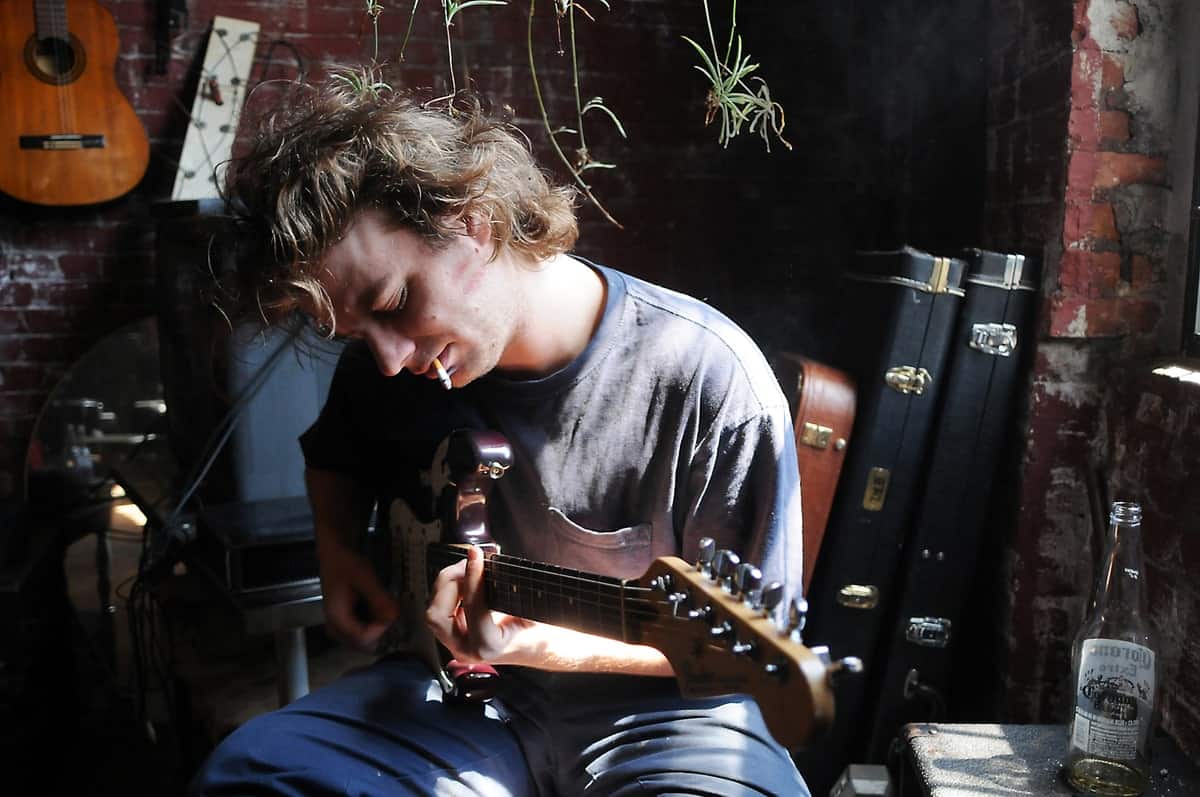
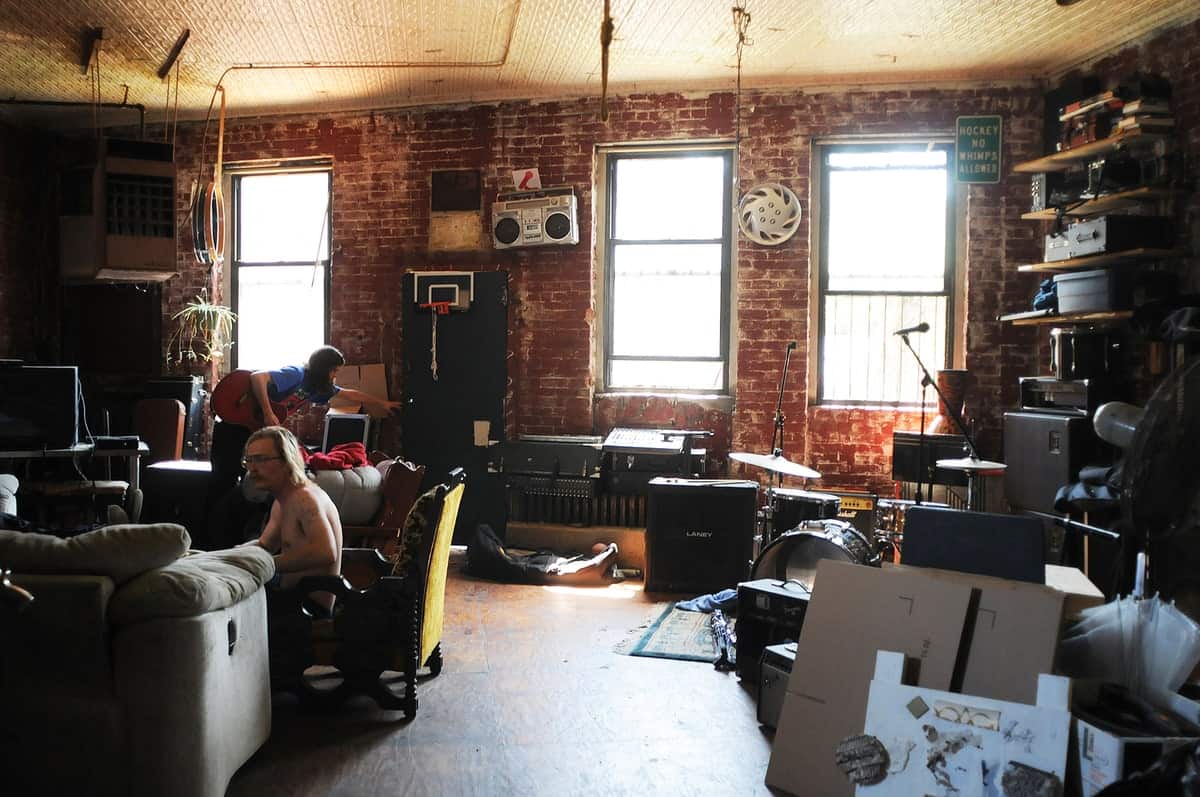
(Photos: Sacha Lecca) Mac DeMarco for Rolling Stone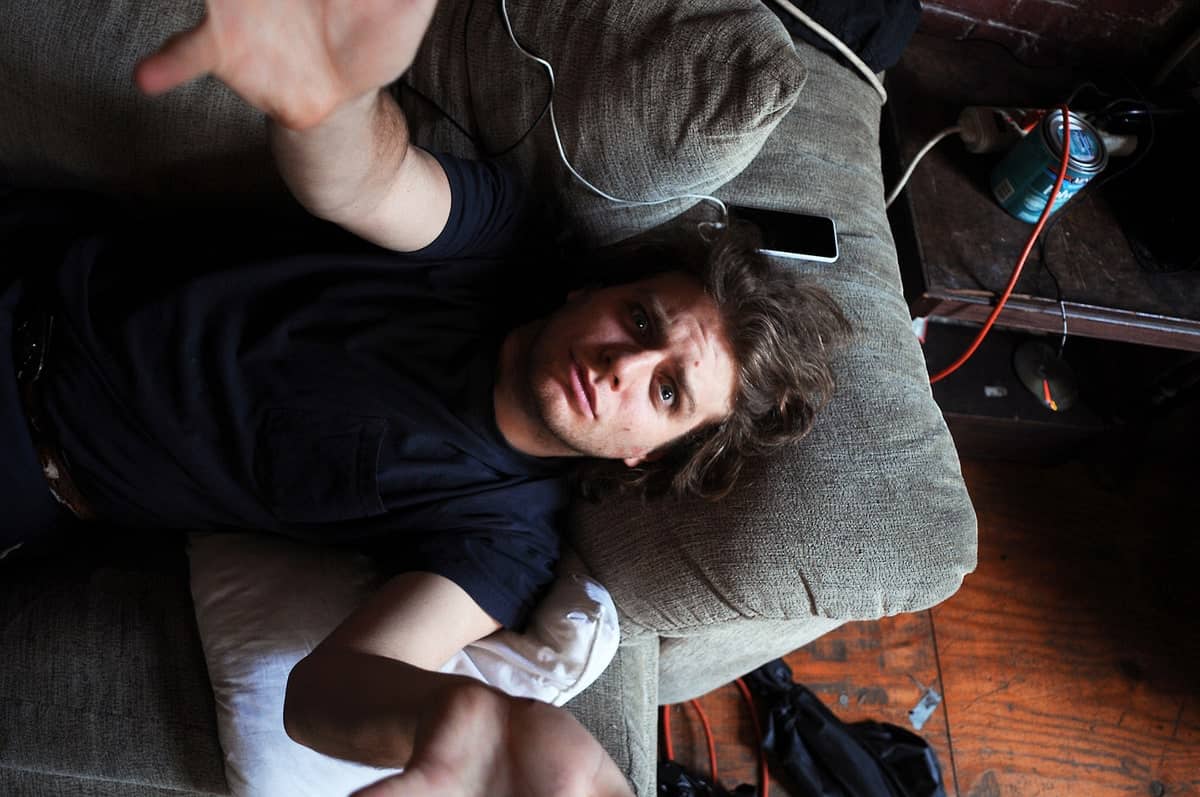
Right.
Which is pretty true. But as budgets got very tight, and if you had that capable photographers working on staff, and it was something that made sense for them to be doing, that became more and more the norm. I mean, I think you’re asking this question about 2016; I don’t think anyone really blinks at it anymore, not like 1994. And so, there are things that I get asked to shoot if, knowing the kind of work that I do, and what I’m capable of, if they know I’m going to get something really good out of it. There are things that I would love to shoot, because maybe it’s a subject matter that I love, a band that I love, or an event that makes sense that I would be doing, but if they want a different point of view, or just someone else to do it, that happens all the time, too.
Yeah.
Yeah, so, and also a lot of times, we’ll go out and shoot some bands that aren’t necessarily on the radar for Rolling Stone yet, so there isn’t necessarily consideration for a story or an item, and you know, four months later, they’re like, “oh, we’re doing a story on this band,” and both me and my co-worker may have shot them a couple times already, so we already have the goods.
Right.
I mean, not to suggest that Rolling Stone is four months behind on, you know, covering some bands!
Hahaha!
But there are a lot of great, young bands that are coming up, and they don’t always get in right when maybe as they’re starting. Once they’ve got an album coming out, or there’s a news peg, a tour starting, that’s when someone maybe gets written about, and maybe we’ve already shot them a few times.
The staff was reduced in late last year, was it?
Yeah! Did…did I tell you that?
No, I’m big on “The Research.”
You’re big on the research! It’s true, it’s been coming down for a while. We lost a couple of photo department staffers, so it’s pretty tight, it’s me and a guy named Griffin Lotz, we both work under the creative director, Jodi Peckman. There was another deputy photo editor, who’s amazing, and also the more of a junior assistant photo editor that was also let go. So yeah, we’re scrambling all the time.
Now that you’re taking on more work, and have been for a while, do you still have enough time for everything you want to do in a day?
Well, I think that’s partly why I come in really early, as well, just to catch up on correspondences. It’s kind of difficult where, speaking as a photo editor, we get a great deal of promo emails a day, and story pitches, and if I don’t answer them in 15-20 minutes, the amount of email just gets knocked down and I don’t ever see it again. And I feel bad about that, but basically, I’ll try and catch up and reply, “We’re not doing this right now,” or “thank you for sending me this,” because often these people will then write back the next day, and say, “hey did you see my promo?” Which, those are the emails I hate, I’m like, “Yes, I saw it!” I just may have not been able to reply! So yeah, my wife, too, when we get home, we’ll just be on all the time, just doing stuff. It would be more of a luxury to have more staff and have more time to maybe split up all the stories we’re working on, and then devote more research time, or more time setting up a shoot, for instance. Now, all that stuff needs to happen pretty quickly. Or, not necessarily quickly, but at the same time, you’re doing five other things.
Right.
Where, I mean, I remember when I first started, it was at Newsweek Magazine, and every section of the magazine had its own photo editor, had its own researcher, and then you could really dive in and become an expert on the story you were working on, and really find the best imagery. But now, it’s being done a lot faster. I mean, we’re really good at what we do!
Sure! Yeah, I mean…
I think the difference is that we might end up more tired at the end of the day, or I don’t know, just in a daze on the train home, that’s about it.
So you are our first photo editor.
Oh, wicked!
Congratulations.
Thank you! Hahahha!
What I’m very curious about is, what are the steps for shepherding a piece, from beginning to end?
You’re speaking about Rolling Stone, I guess?
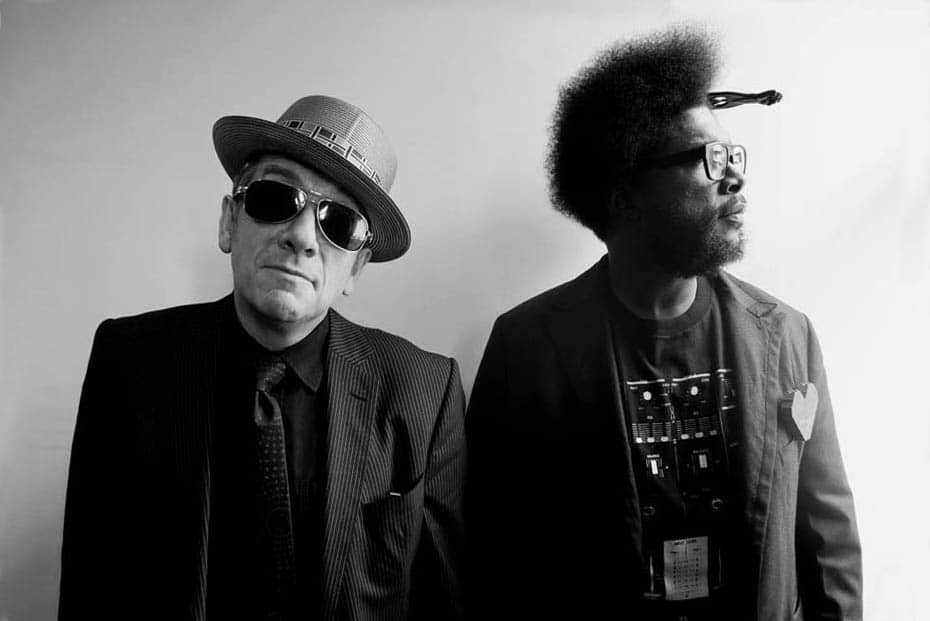
(Photo: Sacha Lecca) Elvis Costello and Questlove, nuff said
Yes, yes.
You…you did your research! Because yes, I did start at Rolling Stone specifically not to work on music stories!
Right!
Because they do a lot of great…every issue has some non-music feature, often national affairs.
Exactly.
Other stories on politics and culture, etc. And as the staff shrunk a little bit, it became a part of my duties to work on features that were music-related. So for me, I mean, I was familiar somewhat with the history of music photography, but I had to really learn a lot, I need to know a lot of classic photographers and know everything that they’ve done, so when it comes up, I’m not just stuck Googling. Sorry, that’s not your question! About shepherding stories through, are you talking about from when we get a story idea, to a draft, and so on?
Yeah!
Well, typically, we might find out about a story that’s being reported, and we may be in a situation where we can do a shoot, or begin some research as that’s happening. A lot of times, we might find out once an early draft is done, and that gets sent around. And in particular, on the non-music side, it can be a story that’s been reported on over the last six months or so, so that, I’m not going to find out on day one, but as it’s nearing completion, I might get a heads up, a very informal heads up.
Hahaha!
Then when the draft is in, it will hit my inbox. A lot of contributing writers that do those kinds of stories haven’t changed, and so at this point now have pretty good relationships with them, and then I can just even reach out to them directly, where I might not have done that on my first few weeks at work, you know.
Right.
Now it’s a formality, I might just bug them first, and say, “Give me a heads up on how this is all going, what kind of photo opportunities there might be.” A lot of them are just seriously research-heavy, which might involve dealing with law enforcement or some ancient research library or something, and the amount of time, as much time as I have, could be really helpful. I might have some breakthrough working with some police department that finally gets me an amazing image.
Yeah.
So once it’s on the schedule, then we’ll have a meeting to show the work I have available, we might make a decision to create some kind of illustration, too. A lot of those non-music features, it might be a photography lead, it might be an illustration, just depending on the strength of what’s available or just sometimes, some stories are…you want to illustrate just to get more of a concept than a specific photo. We have meetings about it, and then I’ll provide images to the art department, I work together with them as we’re laying it out, and that’s pretty much it, on my end, anyway.
Right.
And then, I mean, there’s a lot more to it, obviously, but those are the basic steps.
Have you noticed like a personal sensibility in the kind of photographers you like to choose for pieces?
Yeah, I definitely have my favorites, obviously it needs to make sense with the subject that we’re shooting.
Sure.
And there’s a lot of discussion with the creative director on that, too. I mean, we have to make a case, often. Even for the smallest stories, you know, especially if we’re trying to bring new people in to the magazine, we need to be vigilant and continue to bring that person’s name up, and show their work, and say, “We really want this person to be added to the normal rotation of things,” and at a magazine like Rolling Stone, it can take a while.
Yeah.
I don’t know if it’s longer than most, I know most magazines they like the people they like, and it’s kind of hard to break in. I feel like it’s hard at Rolling Stone, too, but it happens.
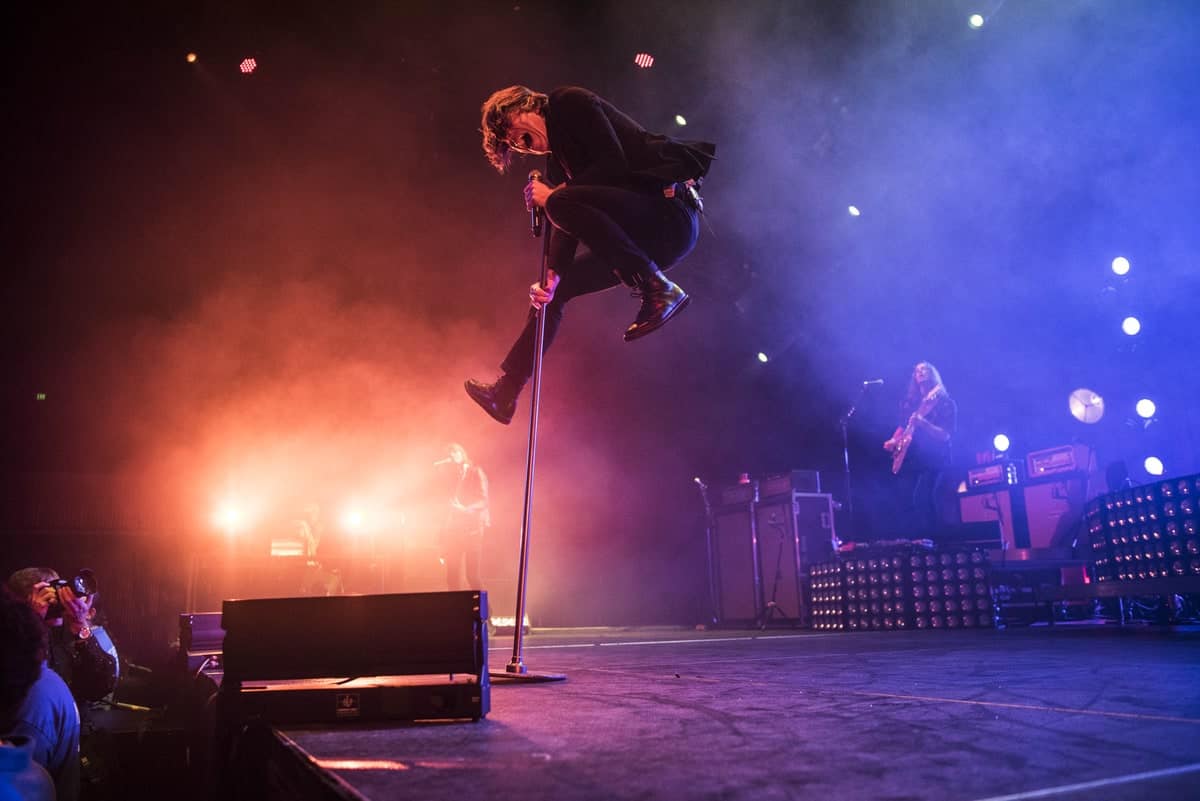
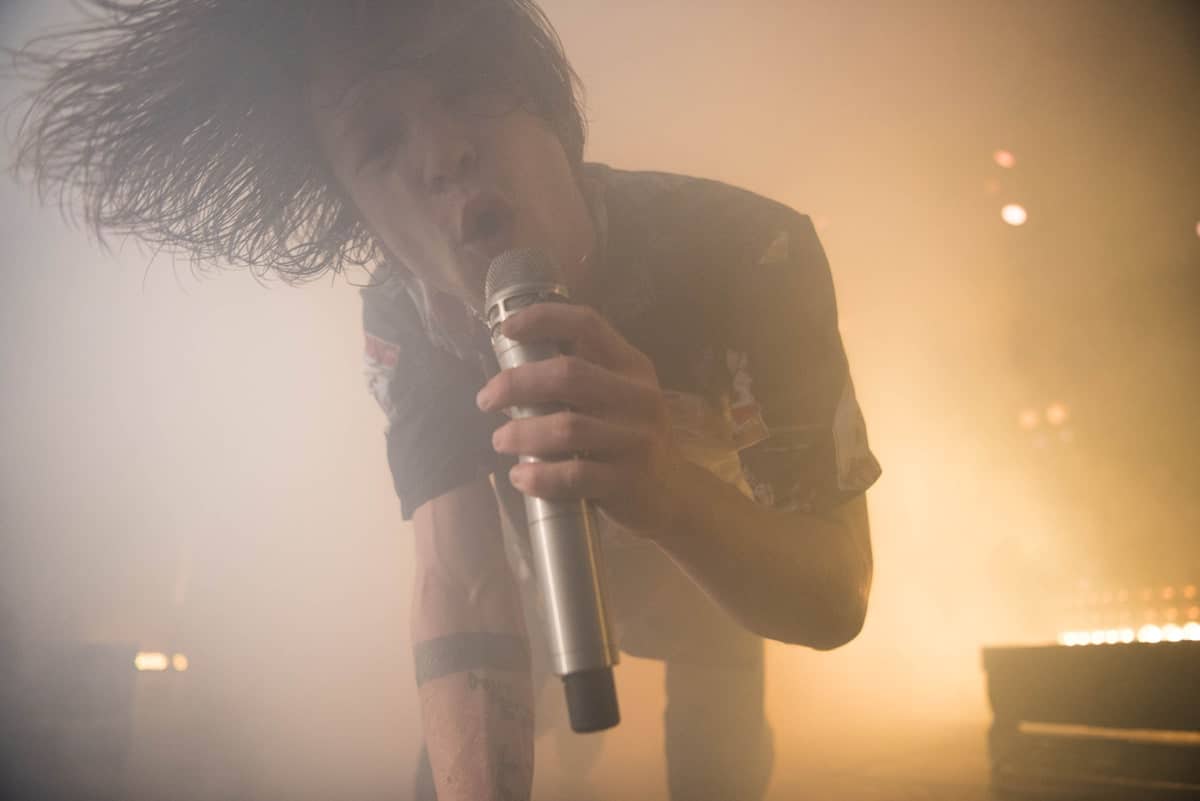
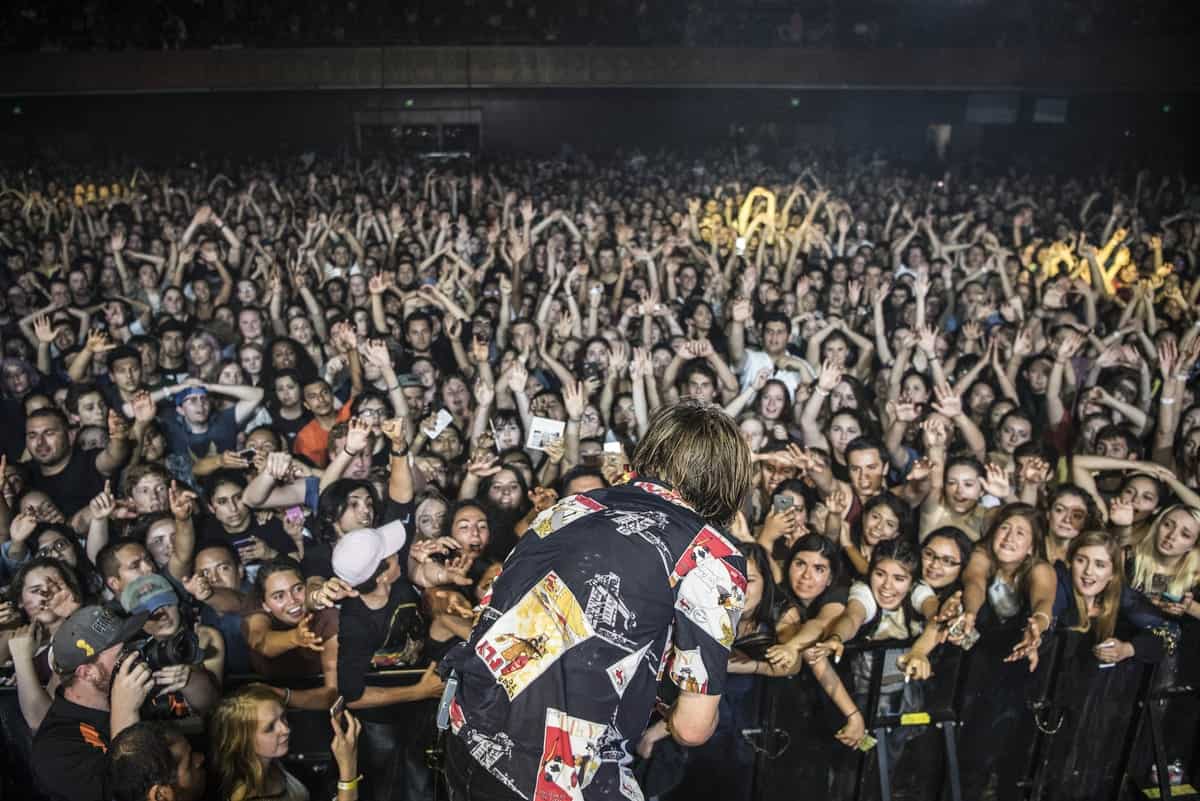
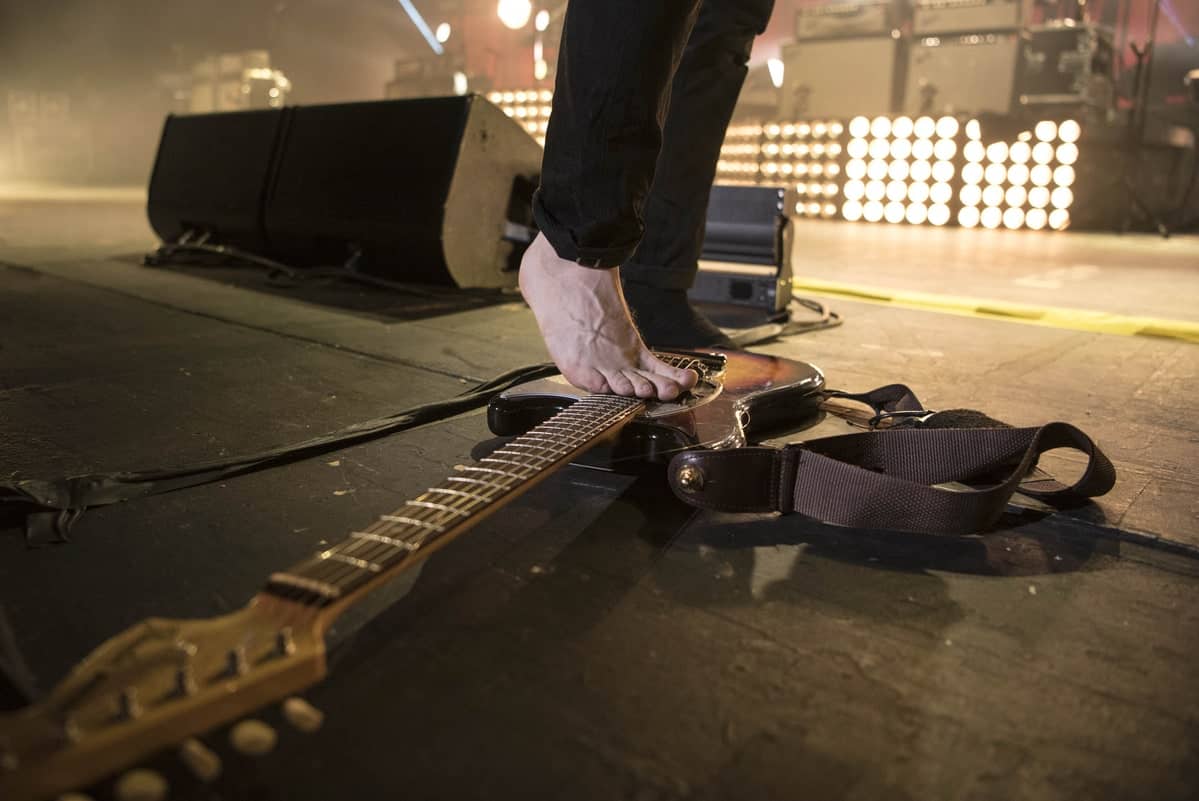
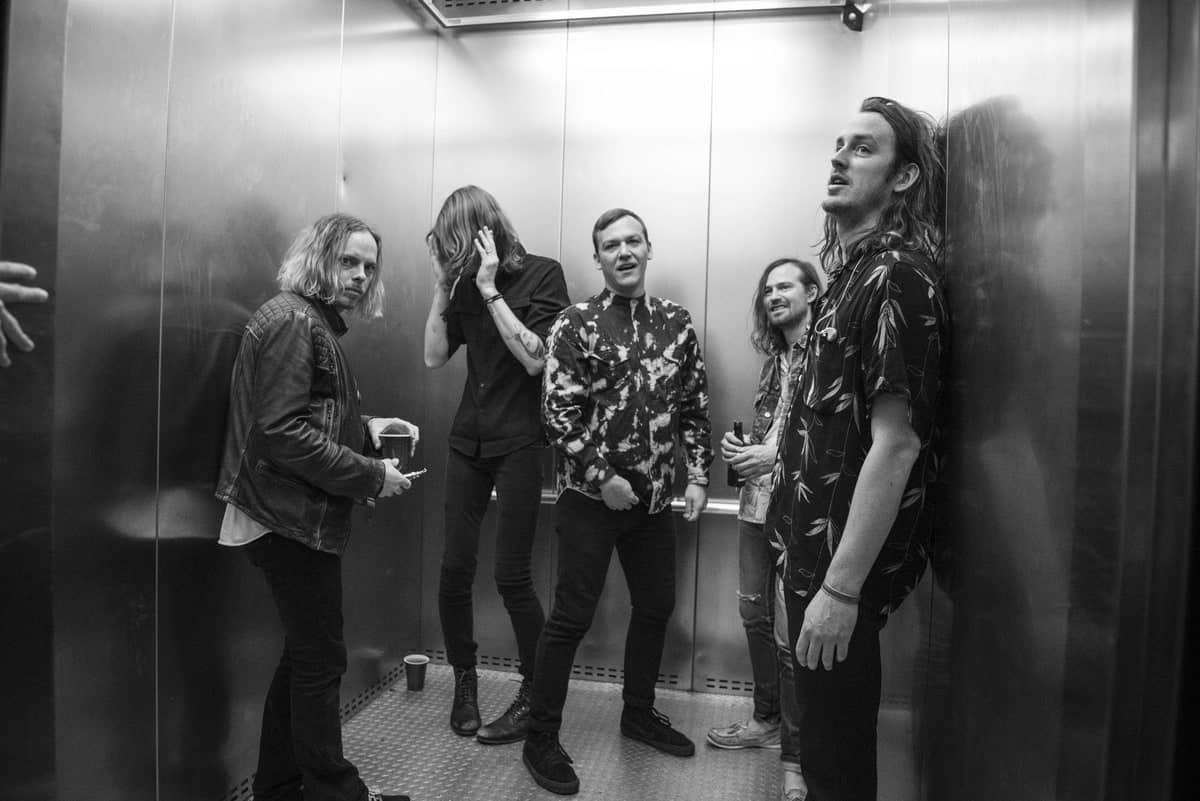
(Photos: Sacha Lecca) Behind-the-Scenes of Cage The Elephant for Rolling Stone 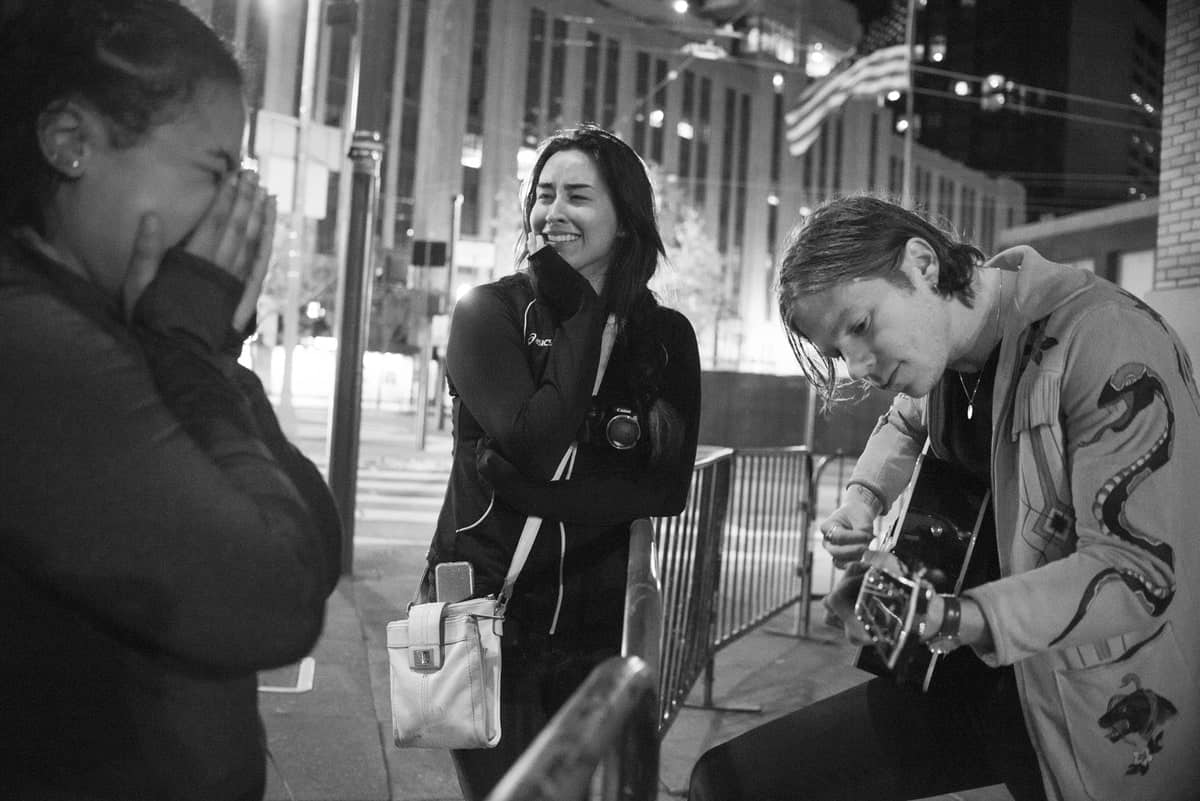
I’m sure you get a lot of photography coming across your desk, but do you actively search for, actively follow photographers on your own?
Oh definitely, yeah, I think that’s the biggest struggle isn’t keeping up with my workload, but keeping up with emerging photographers and work, we’re constantly doing that, either through word of mouth or through promos that come in, looking at other magazines, taking meetings, socializing.
You know, I have to say it might be frustrating for some to hear, but honestly, the number of promos I get that might in result in me getting a first look at someone and noticing that they actually might be a good fit for the magazine, it’s not a common occurrence. I think that’s different from years ago. I think now, especially with social media, I would see people’s work a lot earlier, on Tumblr or on Instagram, or someone’s blog, well before it shows up as a promo. And a lot of the people that we really like and use, I might have never gotten a promo from at all!
Hahaha!
I’m not on their list for a promo, but I’ve seen their work somewhere, and I don’t know if these people even send out promos. Yeah, so it’s…I know it’s really, it’s difficult out there, there’s definitely more photographers trying to get work in a field that’s doing less assigning.
Right.
So, yeah, I’m sensitive to how difficult it is, but yeah. When I first started, I used to keep every single promo I ever got!
Hahahaha!
And, because I was like, “Yes, somebody sent this to me, I’m going to honor it, and just file it away.” And I think I still have a storage space in Manhattan somewhere that has my initial keepsakes of all these, and now my opinion is, it’s not worth keeping if it’s not just something that catches my eye right away, I can’t keep all these.
Right, hahahaha!
I know it sounds really awful! But out of the many that I throw away, I definitely keep a few, and that pile is enormous! Still! Yeah.
With the flood of photography that’s emerged over the past few years, does it feel even possible to keep up?
Yeah, I mean, it’s overwhelming just keeping up with sort of the general landscape as it is, but when you’ve got so many people entering the field every year, and they want your ear, or your phone’s ringing off the hook, just somebody with an elevator pitch, just immediately going into that pitch when you pick up your phone, like “I can’t do this right now!” Hahaha! I’ll just tell you, like in my weaker moments, where I know that these automatic emails blasts, well, or actually, not even an email blast, but someone requesting a meeting with Rolling Stone, and it was like two days after Bowie died, and it was like, “Can I come in today?” And I’m like, “Nooooo!”
Hahahah!
And I feel like there should have been a little bit of foresight and maybe thinking, “That dude is probably going to be busy today.”
Right!
But it’s also very unfair for me to say that, because I’m busy every day, so why not just send that email? Of course, totally go for it, that’s what I tell everyone anyway, if you want to get your work looked at by a photo editor, you have to send them a promo. There’s no great time to do it. So yeah, that’s just me feeling bad that I can’t just reply to everything.
Hahaha!
Most of my friends are photographers, my parents are photographers, so I get it. I know how the business sucks right now, so that’s why I’m not more of a dick.
Hahahaha, that’s a good thing, something to take pride in. Where do you normally go on your own time to consume photography?
Like, which sites?
Yeah.
Oh, well, I think that probably lately, I do follow a lot of people on Tumblr, and I do follow say PDN, and LensCulture. There’s also some Facebook groups that I belong to, and I think that it’s been mostly that, lately, just because that’s a quick fix, you know, ingesting a lot in a short period of time, just scanning that kind of thing. I guess it’s mostly through groups created on Facebook, actually, now. And we always look through some big magazines, New York Times Sunday magazine, in particular, New York Times, in general. For music, actually, for music photography, I don’t really look through a lot of stuff…
Rolling Stone, and Rolling Stone…
Yeah, but there’s a great magazine, that I think comes out quarterly, called Lid, which generally features a lot of incredible archival work, which I’m constantly blown away by, and I now know who the editor is for that and have his email at the ready, like “where did you get this stuff?” Or, “How did you find the guy?” So yeah, I would have to say mostly probably social media, these days.
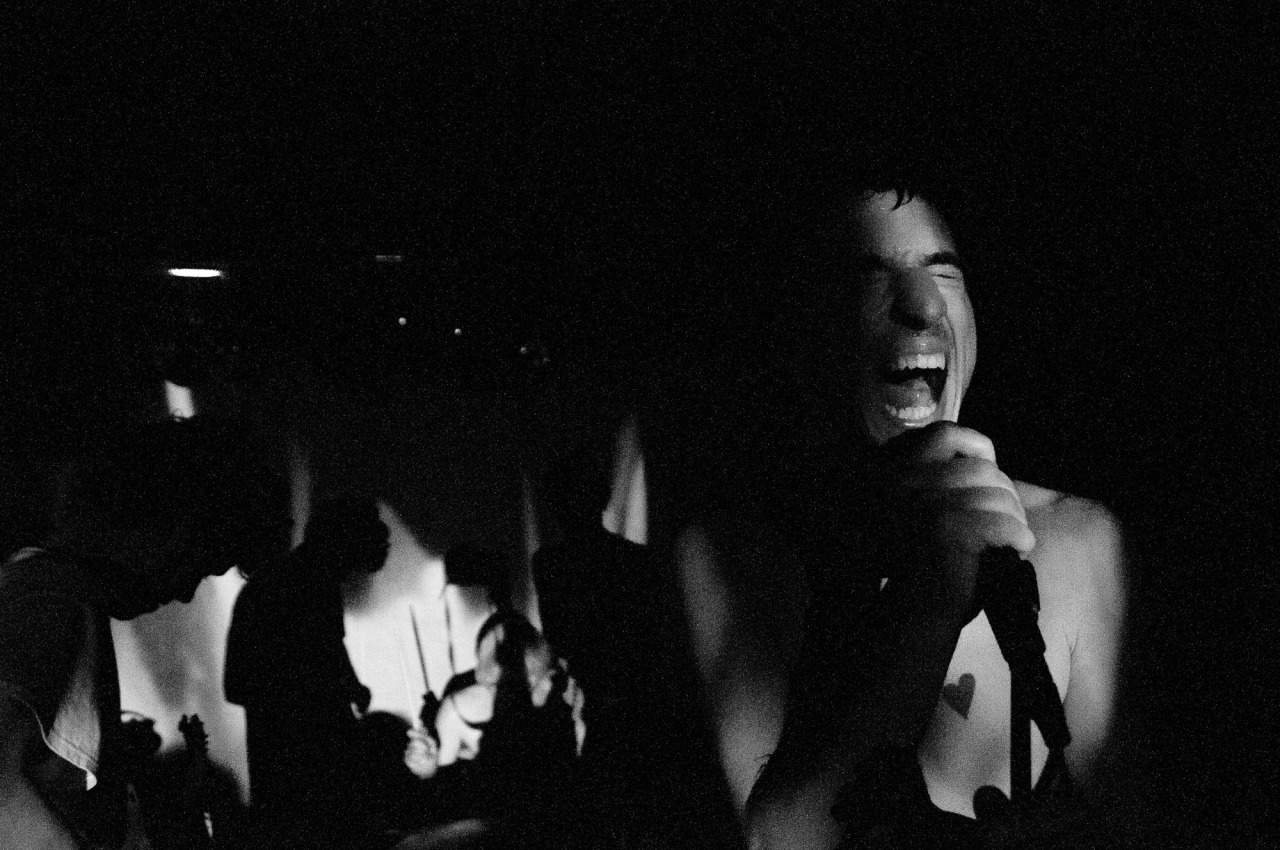
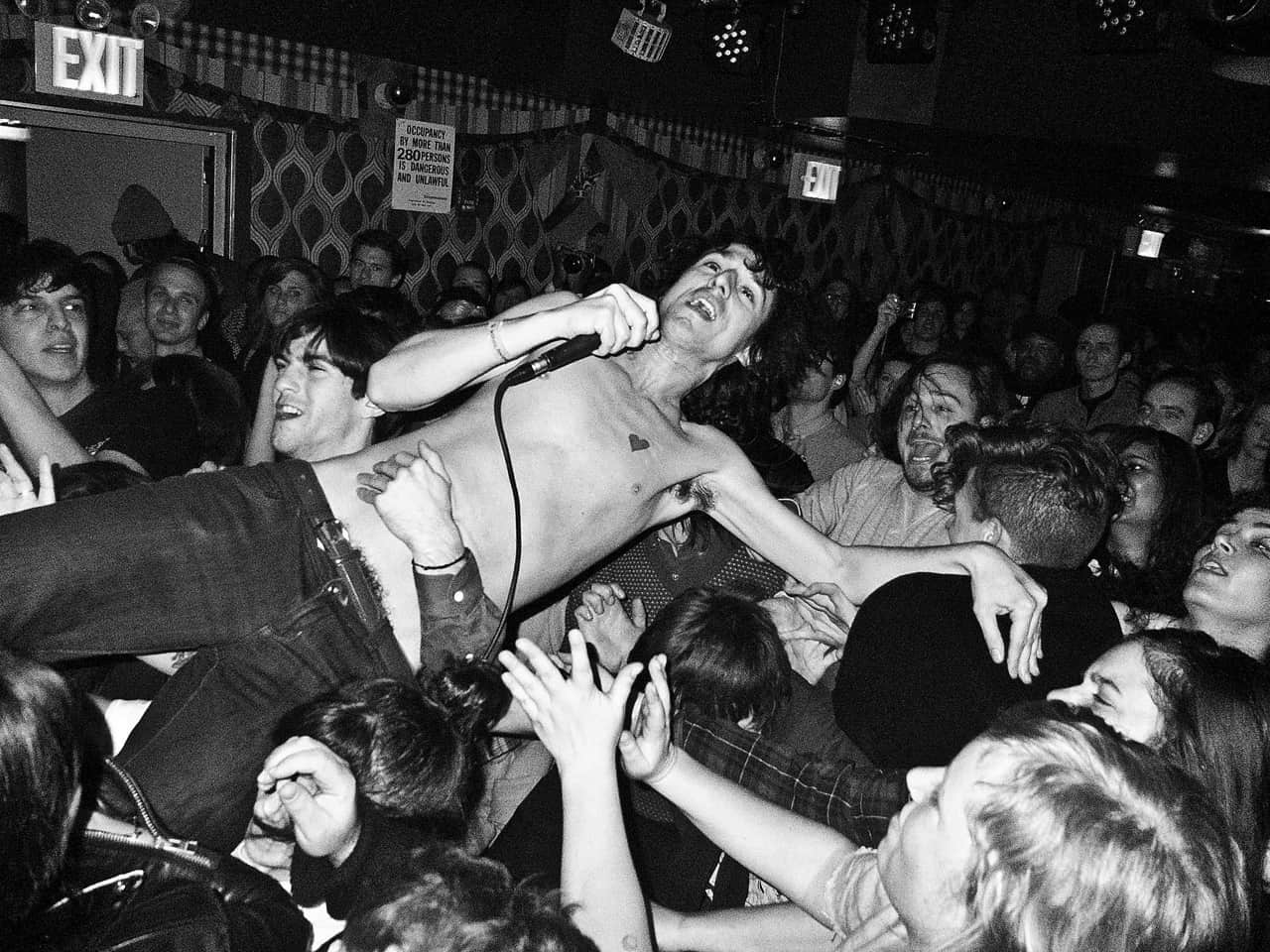
(Photos: Sacha Lecca) Fat White Family at Acheron in Brooklyn, and Bowery Ballroom.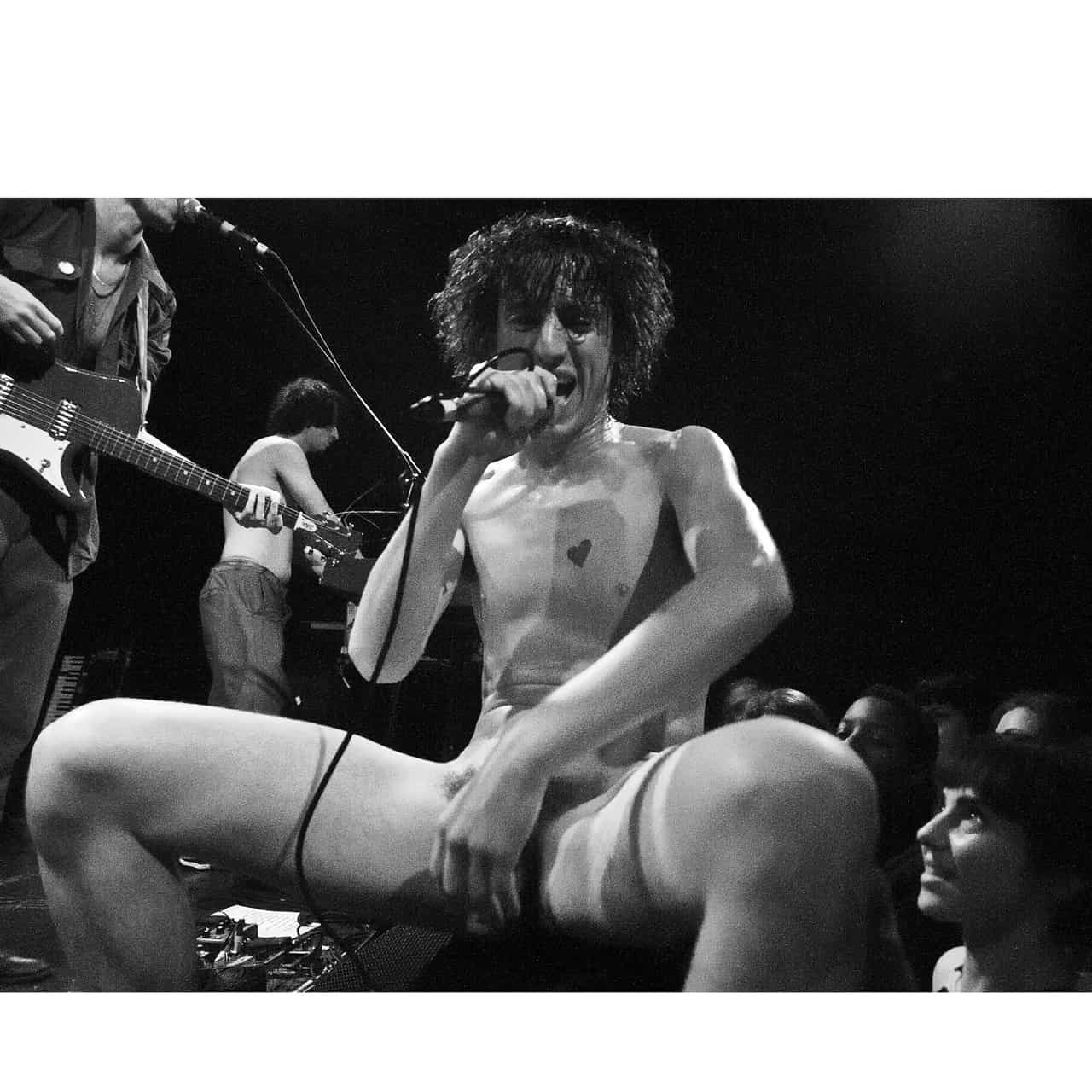
Something that occurred to me with your own work, coming from a heavy photo background: when you shoot, has there ever been a pressure, because your parents shoot, and you’re surrounded by great work all the time, does it feel like less of a pressure because you shoot for yourself?
Well, I like that question. No, there’s incredible pressure, not so much because of my parents shoot, but because of my work as an editor, as well, because of where I work, even if it’s work that I’m doing for myself, I think there’s still, if people know who I am, they know where I work, so I think there might be an expectation that the result should be good.
Yeah.
So that’s always on my mind. But I think, also, especially with social media, there’s a big danger in the habit of oversharing images. I’ve been guilty of this, and it’s something that I keep in mind, especially if you are putting images online, as a sort of counter, kind of set of images, too, you’ll see your regular portfolio or your website, I think it’s fine that they’re looser and that there’s more of them, but I think there should still be some sort of quality to them, and if you feel the like the need to post a few times a day, inevitably, there will be some weaker images in the mix, and I don’t think that’s something you should be putting out there, especially with all the competition. This is a thing I tell a lot of photographers when I do portfolio reviews, either at work or at events: to show a lot of what they’re planning to show to a few other people first. I see it all the time where people get very very attached to images because they were there shooting, and it was a very particular moment that they might romanticize for themselves because of what was going on, and yes, it’s a nice photo, but if you’re showing 30 images to an editor, or going to post something online, it’s just, these images might fall flat in the mix.
Right, sure.
I don’t want to get specific, but I saw a lot of work recently at an event on the refugee crisis around the world, there was actually multiple people showing, and there were so many images that said absolutely nothing, or didn’t add anything to it, but photographers felt it was the bridge from one moment to another, and it’s just like, “yup, just strip that, it doesn’t necessarily hold up on its own.” And that, I think then, if you’re just thinking about the best images, a much stronger body of work, obviously, reveals itself, maybe in a different story altogether, you know, that you’re trying to tell. But in terms of what I think you’re asking, because I shoot a lot of music, there’s definitely a lot of moments in a show that I’ll shoot, that results in a good photo, and might get a lot of positive feedback or hits or something because people are a fan of that band, or that venue, or that event, I think I’d much rather edit for a very good photo rather than just someone at a microphone. And so I try to, that’s kind of my goal, and I know that everyone tries to do that, and I just shot something last night that’s a little difficult because it was just three songs, and it’s someone who doesn’t move very much…
Hahaha!
You know, like, I’m trying to do something more than just this person in front of this microphone.
What do you find yourself drawn to, photographically, visually, in a concert?
Maybe just not the, just sort of what you expect to see. Definitely, I think definitely a strong moment, like you know, when people talk about the decisive moment. I don’t like mic stands, I don’t like microphones blocking someones face, unless there’s something incredibly exciting happening. And just really strong composition, I know it’s kind of hard to do, because in certain shows, you can’t really move very much, but if you have the ability to do that, it’s really more, for me, about a composed scene. And shows are kind of designed to be that, you know, it’s staged, they’re literally on a stage, and it’s hopefully lit quite well, too. That’s the challenge; everybody is kind of shooting the same thing, sometimes with the same gear and sometimes in the same spot, and so if you can come up with more of a poetic moment, composed well, that’s going to stand out, over time. I mean obviously, if you were going to be judged by shooting one show, that’s going to be really tough. But someone young, who’s just starting out, that was a friend of a friend, reached out to me through that friend just to have a look at his stuff, and basically, it was all just very tight heads at microphones. And so that, just as an example, I told him to change his point of view, and shoot wider, and more for a composed scene, or maybe don’t shoot the singer at all, shoot the crowd, it was like, really really interesting events, and just shoot everything about it, and maybe the best image out of that, out of a particular evening isn’t the band at all.
Yeah.
I mean, obviously where I work, what we need all the time is somebody singing in a microphone, ahahaha, so it’s good to have that, too. I don’t want to talk badly about people who go all night to do that. The work that I do for myself isn’t always on, I don’t think about it always as something that Rolling Stone could run. And I’ve definitely had a band become important to Rolling Stone’s coverage that I shot a long time ago, and I didn’t have a whole lot of images that might work for them.
Right.
So, because I shoot sometimes very dark, very contrasty, and often convert to black and white, I’m often told, “Do you have this in color? Can you brighten this up?” So yeah, I’ll do the stuff that’s editorially viable, but I’m also just trying to get something beautiful, too.
Were you as interested in music photography before Rolling Stone?
Yeah, but more as a consumer of it than as someone who would ever try and go out and do it. I used to go to shows all the time, but I never brought a camera with me, or if I did, I was always in the back, and I would sort of become more obsessed with some shadow on the wall than the thing, because there are like guys that are doing it, because I was a big fan of, and still am a huge fan of Danny Clinch, and so it just felt like, there’s this amazing artist doing this, I just didn’t consider it for myself.
And then when I…within I think a couple months, we featured a band as a Band to Watch, and this was late 2007-2008, and it’s a band I really like, and they did a portrait shoot with them when they were in New York, and I was going, I was flying to London with my wife, because her brother-in-law was going to star in Jersey Boys as Frankie Valli, so when we were there, I saw that that band was playing, and just called their management up, and thought they’d be sort of…still psyched that they got a big portrait in Rolling Stone, I said, “hey, can I come shoot the show?” That was, I don’t know why I even asked, I’d never shot a show before, not properly, and they said, “Yeah, we’d love to have you!” They ended up giving me an all access pass.
Aw yeahhhh.
I was backstage with them, and on stage, throughout the venue, wherever I wanted to be, I was like, “Yeah, this is great!” So now that I have to be relegated to just the first three songs, I’m very very surly.
Are you ever able to leverage being a part of Rolling Stone to get you better photo access?
You’d think so.
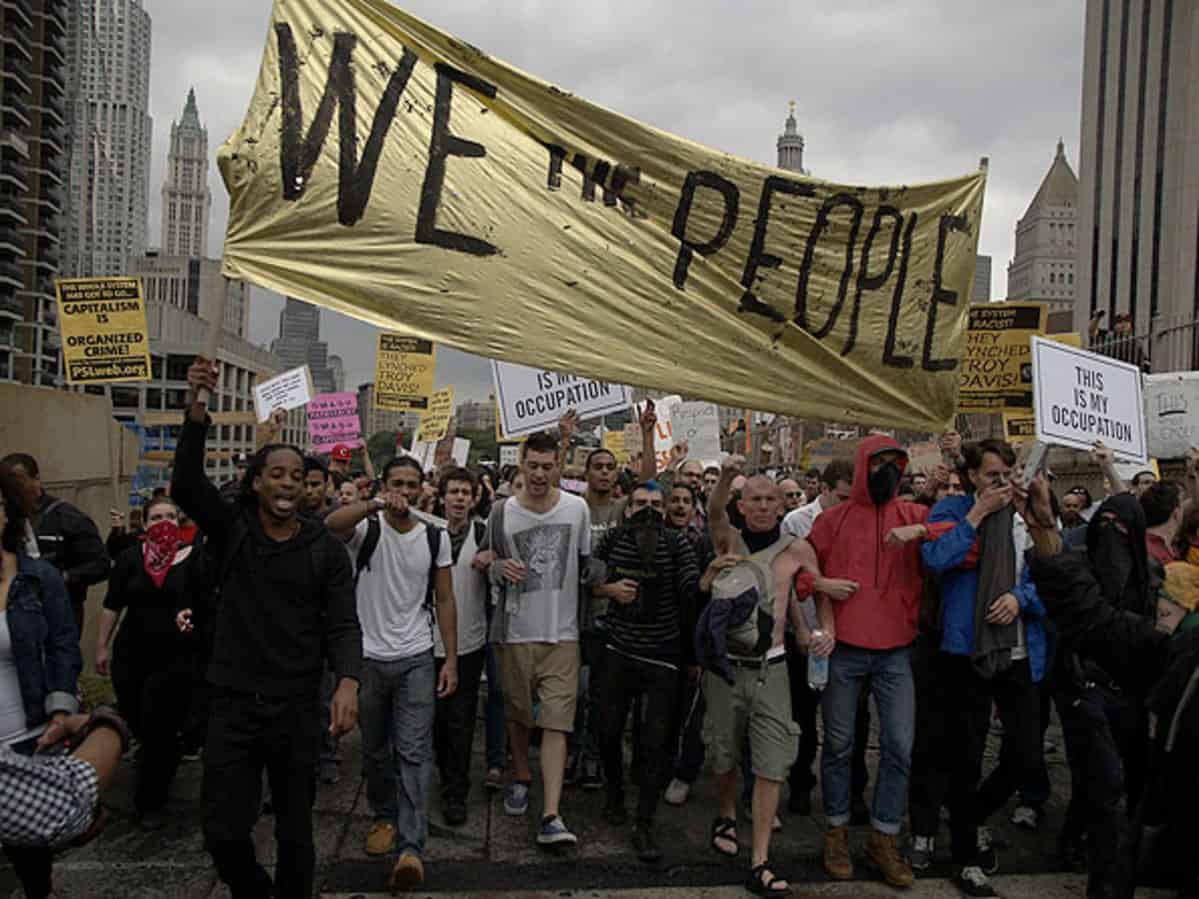
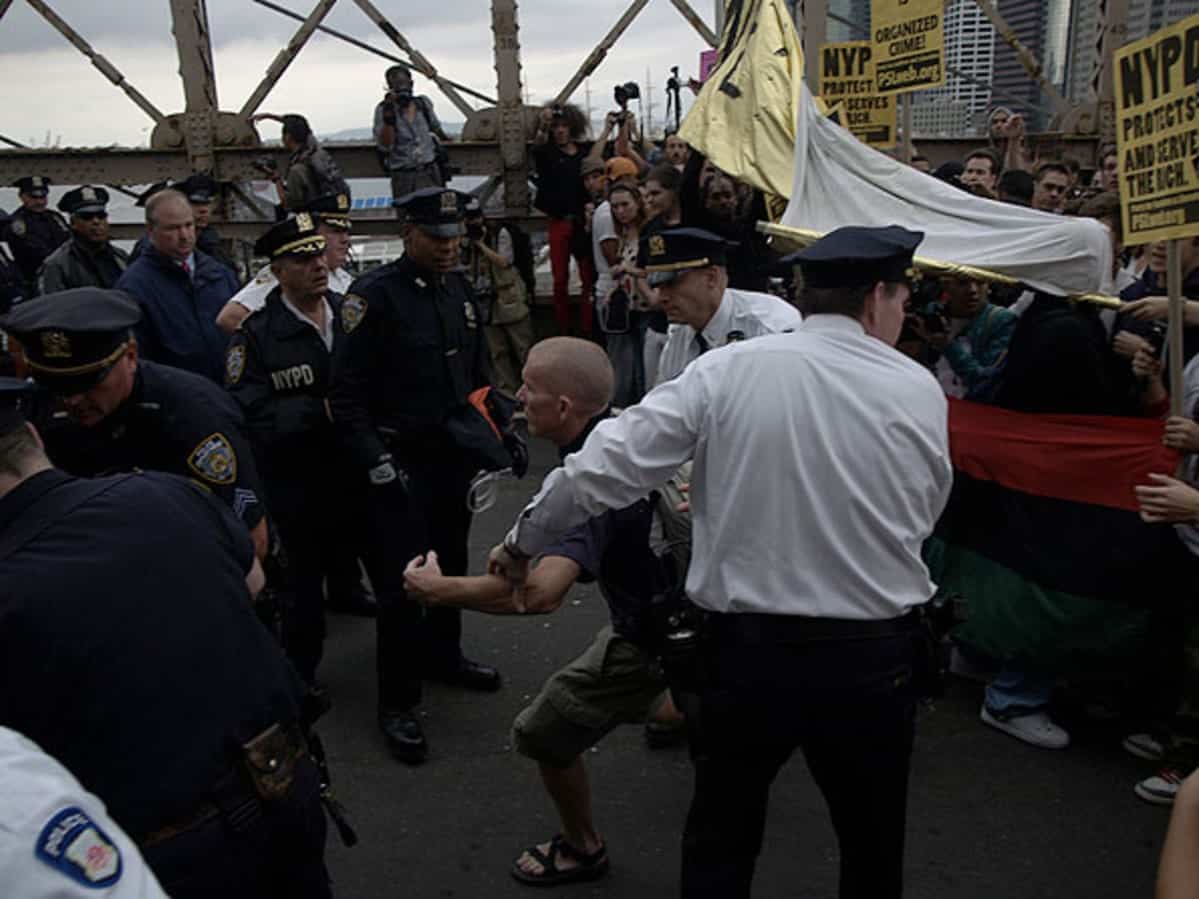
(Photos: Sacha Lecca) Occupy Wall Street
You’d hope so!
Well, everyone thinks that it’s a no brainer, like access to a really big show, but because it’s Rolling Stone, too, I think that the artists want to make sure that they’re being covered. They want to be in, so that, I think there might be more follow up in terms of, “What’s your coverage going to be?” You know, if we get that additional access, rather than just like, “Wouldn’t you just want me to do it? Or one of our photographers to do it?”
More controlled about, yeah.
I think there’s maybe more sensitivity because it is a big name publication. I’ve had issues, in the past, where I did get that access in order to do, god, I’m trying to use my words very carefully…
Ha!
It was a situation where I did get better access, but then it was a pair of bands that were sort of co-headliners, wasn’t one opening for the other, and I had my access through both of their management teams, just to be proper about it, but one band got featured more than the other, in the resulting slideshow, and I think that they each thought they were going to get their own kind of online kind of gallery, because they’re co-headliners.
Right.
And it didn’t work out that way, and it was a problem for me. So, yeah.
Haha! You heard from the bands?
I did, I did. So you got to be, there’s a lot of…
Politics.
Yeah, there’s a lot of politics, and these are people that you want to work with in the future, and their publicists also represent other people that you want to work with, so it’s, you know, it’s generally not an issue, but you know, there’s, it’s always best to be upfront, like, “we don’t have anything planned, coverage wise, necessarily, I would like to be at the show, regardless, maybe something will come of it.”
Yeah.
If there’s the space for that, yeah, I’ll get in. Like, last night I shot a really big show, and I didn’t get approved until kind of last minute, I think there’s space issues, too, and there’s a lot of people I know in the music photographer world that didn’t get in, so that kind of sucks, now I feel like we definitely have to run something since I’m taking someone’s spot, potentially.
Right, yeah. For myself, the main draw for Rolling Stone has always been the politics.
Yeah!
I was a big fan of Hunter Thompson, and Matt Taibbi…
Yeah, this is why I went over.
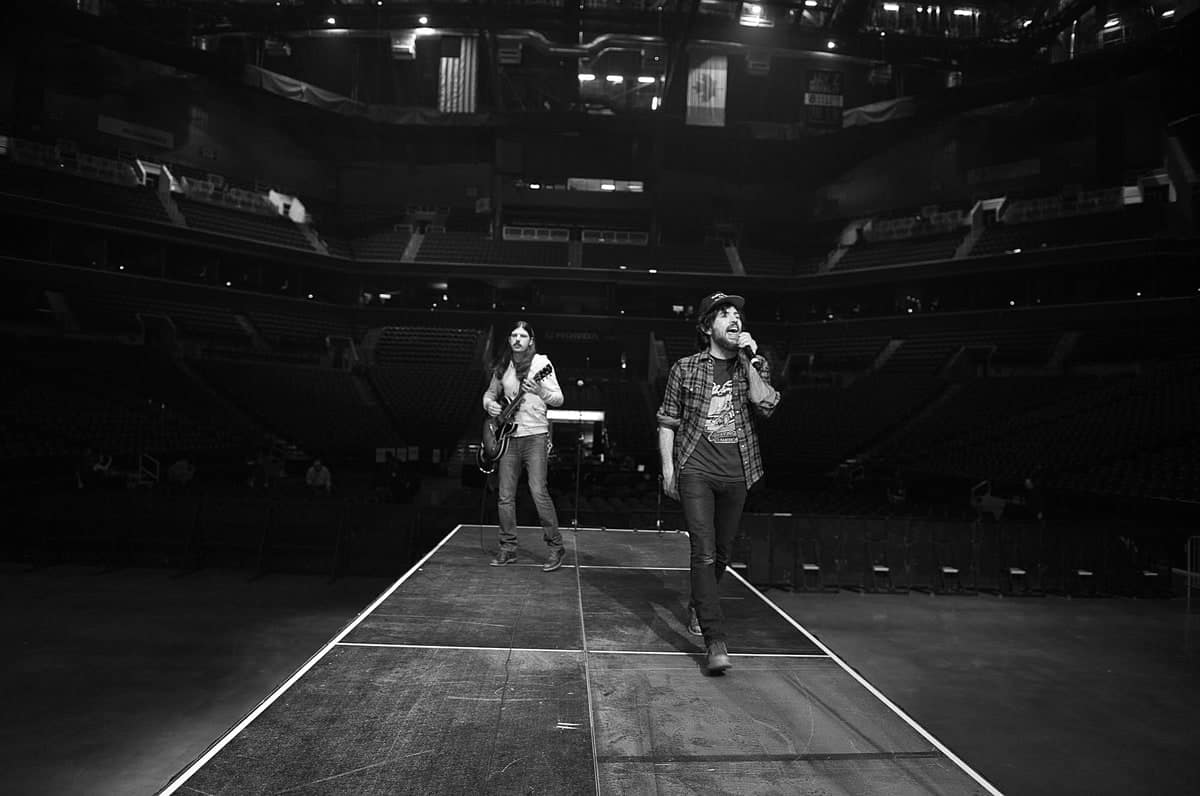
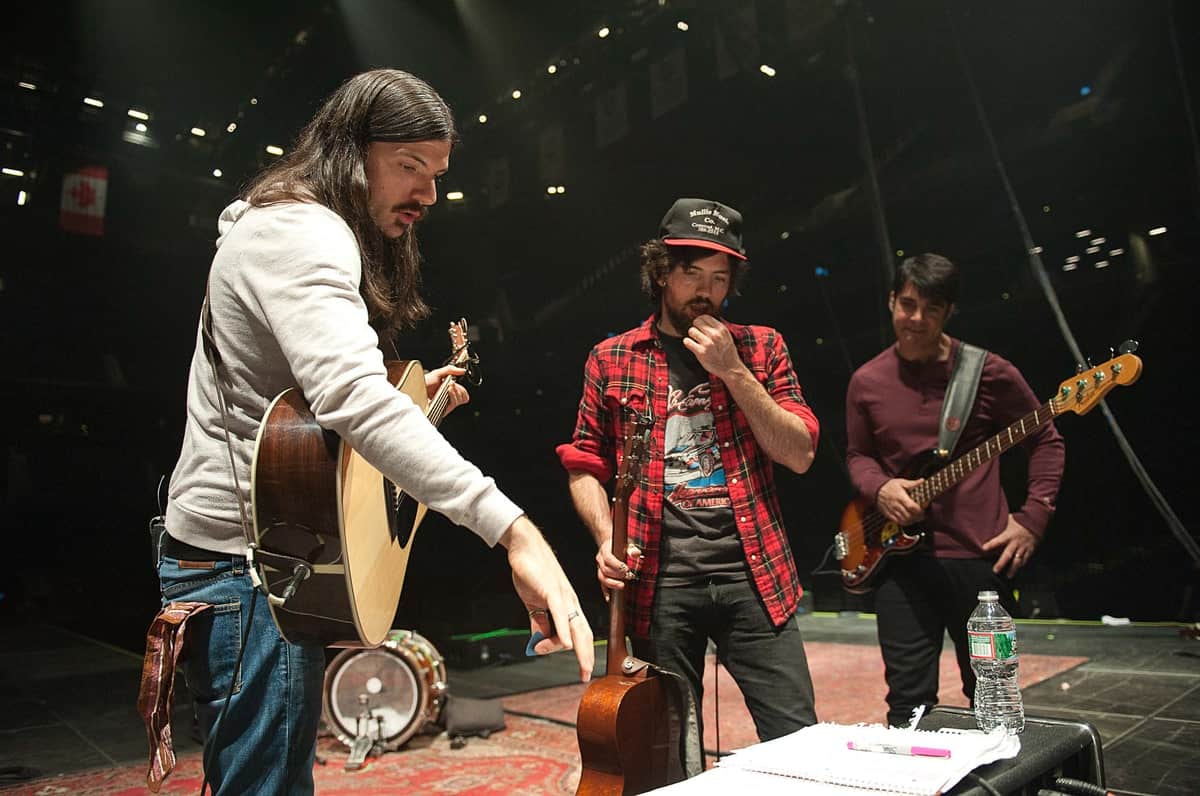
(Photos: Sacha Lecca) Avett Brothers for Rolling Stone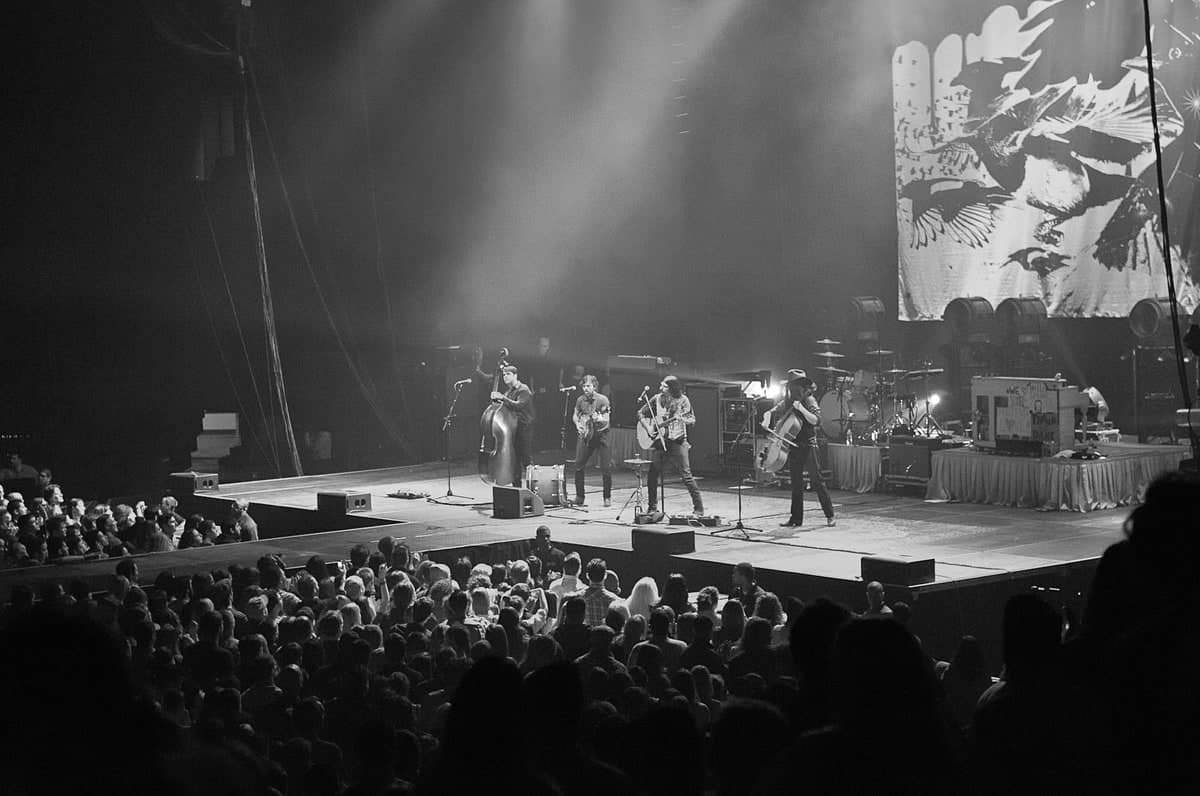
Yeah, I guess that’s what I’m leading to, what was it that drew you to Rolling Stone?
It was exactly that, it was also a time in my life where I kind of had a sweet job somewhere else, but the budgets were diminishing, and without it, it was a very uncreative place to be. And so, I had like a corner office, glass office.
That’s good!
Overlooking a golf course, ahahaha, kind of thing, like “oh this is so nice,” you know. But as the budgets got reduced there, we were just sort of left to requesting available photos from business people, and it was like “oh, I can’t do it.” Although I loved where I worked, and they were wonderful people. I got a call…before that my early days were at Newsweek, and the boss there, former boss there was asked by the creative director at Rolling Stone, “Do you know anyone, because we’re looking for someone specifically to work on the non-music features,” and they mentioned my name, and I had, like, three interviews, and I was thrilled to get in. It was kind of more of a lateral move, which I guess you’re not supposed to do, but I really wanted to work there.
Sure.
And it would make a big difference in my future, I thought. I still think. But yeah, it was really more about specializing in that sort of work and that sort of research. Some of it was kind of heavy, and because a lot of them were being done, constantly, in advance, like I said, some of them are reported over a series of months.
Right.
Often, with the staff size they had, they couldn’t dedicate the time to doing it until it was on the schedule, and often you didn’t have enough time to get everything done. So that ended up being a really great start for me there, because the editors I worked with, and the writers that I worked with are all legends, and that was really great. I would still love to do just that.
And in fact, I still do all the non-music features, and then sort of a portion of the other ones, too. But yeah, that was a blast, and yeah, working on Matt Taibbi stories are great, with politics heating up now, we’re getting back into the fun stuff, so I’m looking forward to that again. Every election cycle, I love reading that stuff. I mean, the craziest thing that I ever worked on was a story…I mean, there has been some really crazy stuff, like whenever we deal with, or do stories on hackers, and I have to reach out to these hackers, like please, don’t get pissed at me, and you know, ruin my credit rating.
But yeah, there was a big story we were doing on something called the Kill Team, I don’t know if you remember that, it was a piece that, on a particular unit which were pretty much committing war crimes in Afghanistan.
Yeah yeah yeah.
I still can’t say much about it, but the way the images came to us were through channels, let’s say, and I had little to do with that, that was more the writer’s contact, but my experience in having to sort of pick them up, because he wouldn’t email them, so I had to kind of go somewhere with a laptop and a flash drive and download it and verify, I don’t know, what am I verifying, these horrifying images. But then, through analyzing the metadata for many days, and provided the times were all set right, and the dates were set right, you could see all of a sudden, like, who’s in everyone’s photos, and you can also kind of figure out whose camera was whose.
Ahh.
And build this timeline of these images, and match them up to incident reports, which was a hundred page document by the DoD, which was also leaked. And then, just really get a clear picture of what happened, and who did what, and it was, that was like the craziest story I ever worked on. And so, yeah, I love researching, more than anything. I have to deal with the editors at the presidential libraries.
Okay.
The various presidential libraries. And I’m like a fanboy when I call them, when you hear about a meeting that happened in the Carter White House on a particular day, that’s not on the public record, but you have it on good authority that some writer at the time, and you call them, and you say, “dude, you got to look up this day for me, pull the contact sheets,” and it’s like, “yeah, there are two frames of this guy in the White House,” and you’re like, “yes, you have to scan it for me!” So I would totally be happy working on some crazy archive like that, and just diving into all those details.
(Photo: Sacha Lecca) Morrissey at Madison Square Garden 6/27/15 for Rolling Stone magazine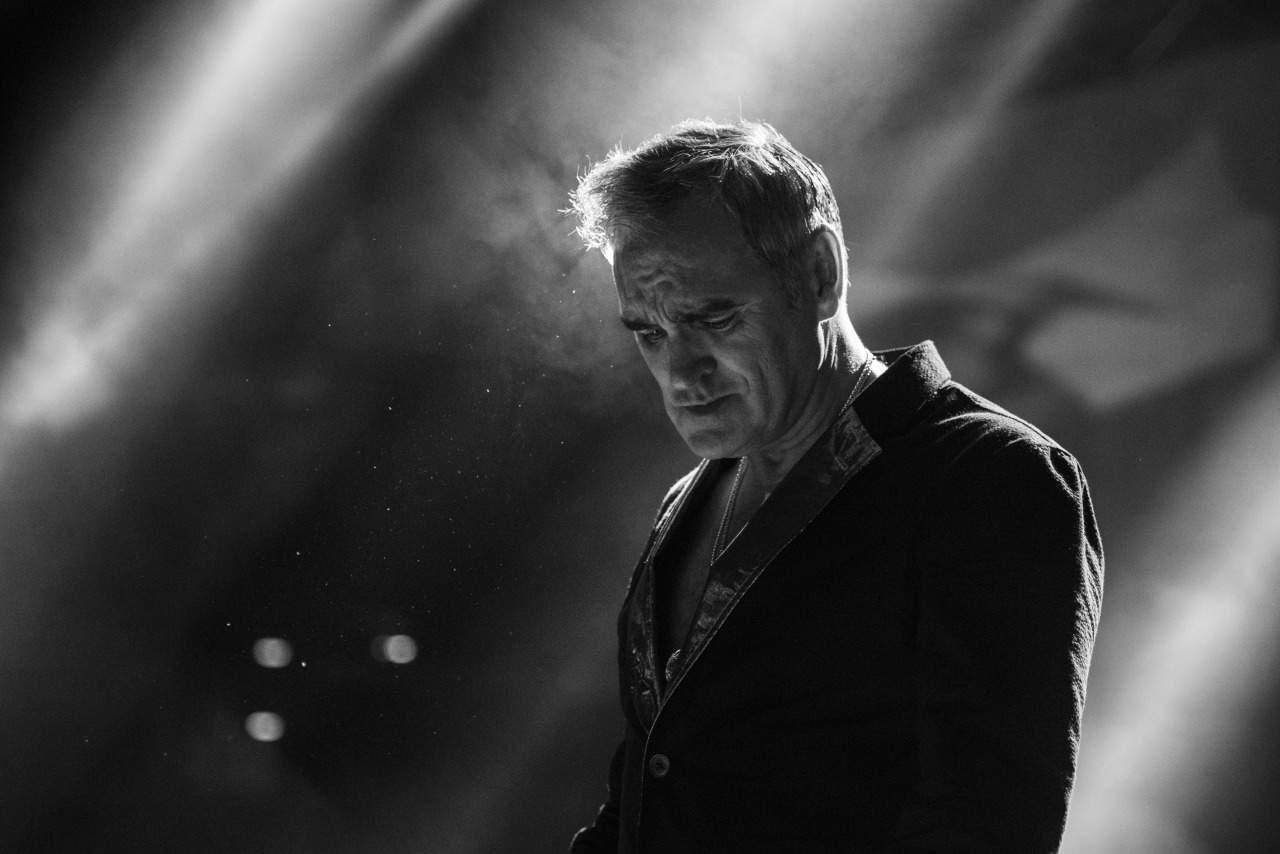
I was watching O.J.: Made in America last night, and they had a shot of O.J. with J. Edgar Hoover.
I saw that last night! Yeah! That’s the kind of stuff that you find out! There are crazy lobbyists that are working now, and were members of The Young Republicans Club 1960-something, and then in the 80’s, there’s a shot of this person shaking hands with Reagan in the White House. Or early I think an early N.R.A. thing, and there’s a shot of I think Reagan like aiming a rifle in the Oval Office after that visit, and it’s the craziest stuff, and it’s never been released. That O.J. picture, too, struck me!
Yeah, it’s just so…
That’s the kind of thing, sometimes you kind of know that it exists, I’m not sure how common that image was before that showed last night, it may have been around, but there are, there’s a lot of stuff like that, where you kind of need to do a lot of good research, and sometimes have to make requests that don’t get honored right away, basically because I don’t know, sometimes there’s politics involved. I don’t think I’ve ever gotten anything out of the Bush library, although, there may be a rule where they don’t have to necessarily have to send out anything until a certain number of years after…
Oh yeah, post-presidency.
So it might still be in that time, but we’ll see. That’s the kind of stuff I like to nerd out on.
It seems like there’s a good deal of that sort of “digging” in your job.
And the same with music photography, too, there’s a lot of really great online collections, agencies and such, where there’s a lot of great work available, but I think more so with music photography, there’s a lot of guys who have these great stuff that doesn’t exist anywhere except their own living room, and you kind of need to know who spent time with Bruce Springsteen, during these particular years, early years, there’s a number of people, it’s remarkable, people who have very rare things. This is stuff I’ve learned on the job.
Right.
At Rolling Stone, and incredibly fascinating for me, as well. Like, there’s a guy who’s a photographer out of Dallas who shot a lot in the 70’s, Carl Dunn, and he is one of the photographers that doesn’t have, I don’t think his work is with any agency, but by learning this sort of stuff, you know when these artists tour, these bands tour, there’s a circuit involved, and certain venues and certain cities, you know the big bands would play, and he would shoot everyone coming through Dallas, during his time. The stuff he has is unbelievable, especially of Led Zeppelin, it’s like, I had no idea. We were doing a Zeppelin issue and learned about his work, and I was like “oh my god!” It’s incredible, so yeah, if you follow him on Facebook, he posts, he just keeps scanning things every day. And this is stuff that’s not on Getty, so that’s just one example of, out of literally hundreds of people, if you’re covering someone that kind of came out of the San Francisco during a certain period, there’s a long list of photographers that you call and say, “Were you doing this at the time?” And that was a big learning thing, for me.
That sounds like a fantastic part of the job!
Oh yeah, it’s the best!
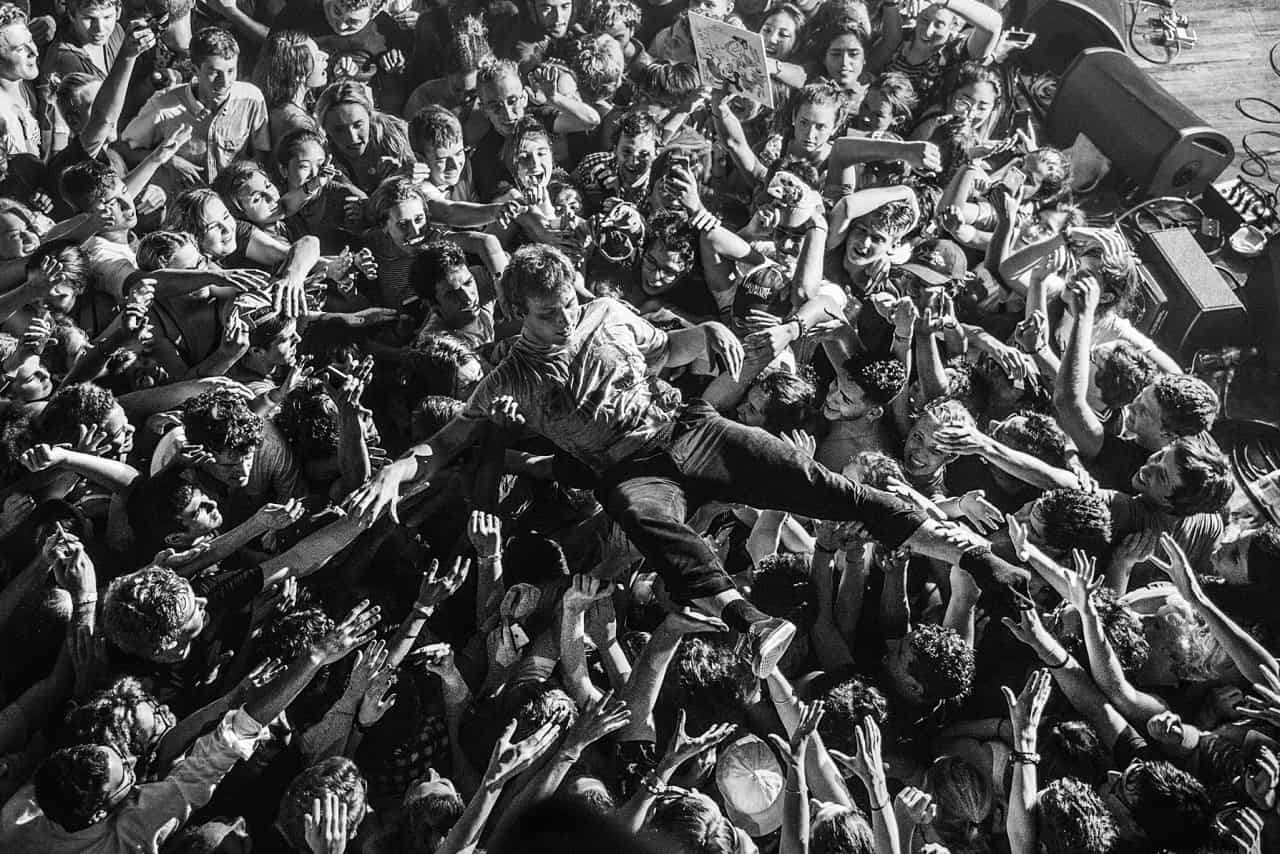
Do you think of yourself as a journalist, as an editor, as a photographer? A multi-hyphenate?
I would, primarily as a photo editor, I think there’s…I’ve gotten more comfortable in calling myself a photographer, I used to not attach that term to myself, even though I shot a ton. Just because it wasn’t the way I earned my living, but at the same time, I also think I feel like there were photographers that I thought were, I would say, whose work was very poor, who call themselves a photographer…I’m like, why are you calling yourself a photographer?! And that’s a horrible thing to say…
I used to feel that way! And then a friend of mine told me, “You know, a photographer is someone who takes pictures, that’s what it says in the dictionary.” So…
There you go!
Hahahaha!
And you know, I definitely sometimes want to attach standards to it, in some way, and that’s why I’ve always felt uncomfortable, for myself. I just decided a few years ago, I mean, I’ve been shooting music since I got to Rolling Stone, but it wasn’t always very often. The opportunities I had were often with really big bands, or had become big bands, and what really appeals to me more, sometimes, are their support acts, the people just still struggling or emerging, and then I would go see them, and go see the bands opening for them, and so on and so forth. The I’d end up shooting more in places that I wouldn’t frequent very often, was these smaller clubs where the atmosphere is a lot more intense and interesting, and people are sometimes more interesting, and you have the freedom to usually shoot the whole show.
Yeah, yeah.
And there’s more of a connection with the band. I have become friends with a lot of people, and it’s become, I don’t know, people ask me what I’m going to do with this material, and I don’t know yet, but I’ve gotten some very nice feedback from photographers that I admire tremendously, which means the world. So yeah, I’ve become more comfortable calling myself a photographer. I find myself in the situation where I would rather have someone else edit the work that I’m doing, because I fall into the same traps that we talked about before, like “oh, but this, when he did that thing!! It was so cool!!” And then the photo just doesn’t show that.
Right.
So I, yeah, there’s sometimes shows I shoot and I don’t post anything.
Yeah, so let me ask you, because I’ve heard before from other photographers and friends I know, about the Three Song Rule. Where did that come from?
I don’t know, I heard a rumor that it started with Bruce in the 70’s, but I’m not sure about that, I don’t know how it started.
I never liked him. Hahaha!
Well, now, you know, gosh, I wonder if we could trace the origin of this…at some point, I have to agree that it would kind of suck to have all the people in front of you performing be like a huge row of photographers, and then have the hardcore fans right behind them, so it’s almost this barrier to your fans.
Right.
And as a fan, too, sometimes the worst thing that you can do is completely take your attention away from really experiencing these moments.
Agreed.
So, I kind of get it. At these bigger shows, sometimes there’s dozens of photographers, and if they were there the whole time, that would just, I’m not saying that I love the first three songs rule, but I guess I can deal with that.
Heh.
I’ve heard other artists, you know, you get like 60 seconds.
Oh god.
And I’m not going to name names, or like 90 seconds, and then they shuffle you out. And often the first 90 seconds are the lighting…
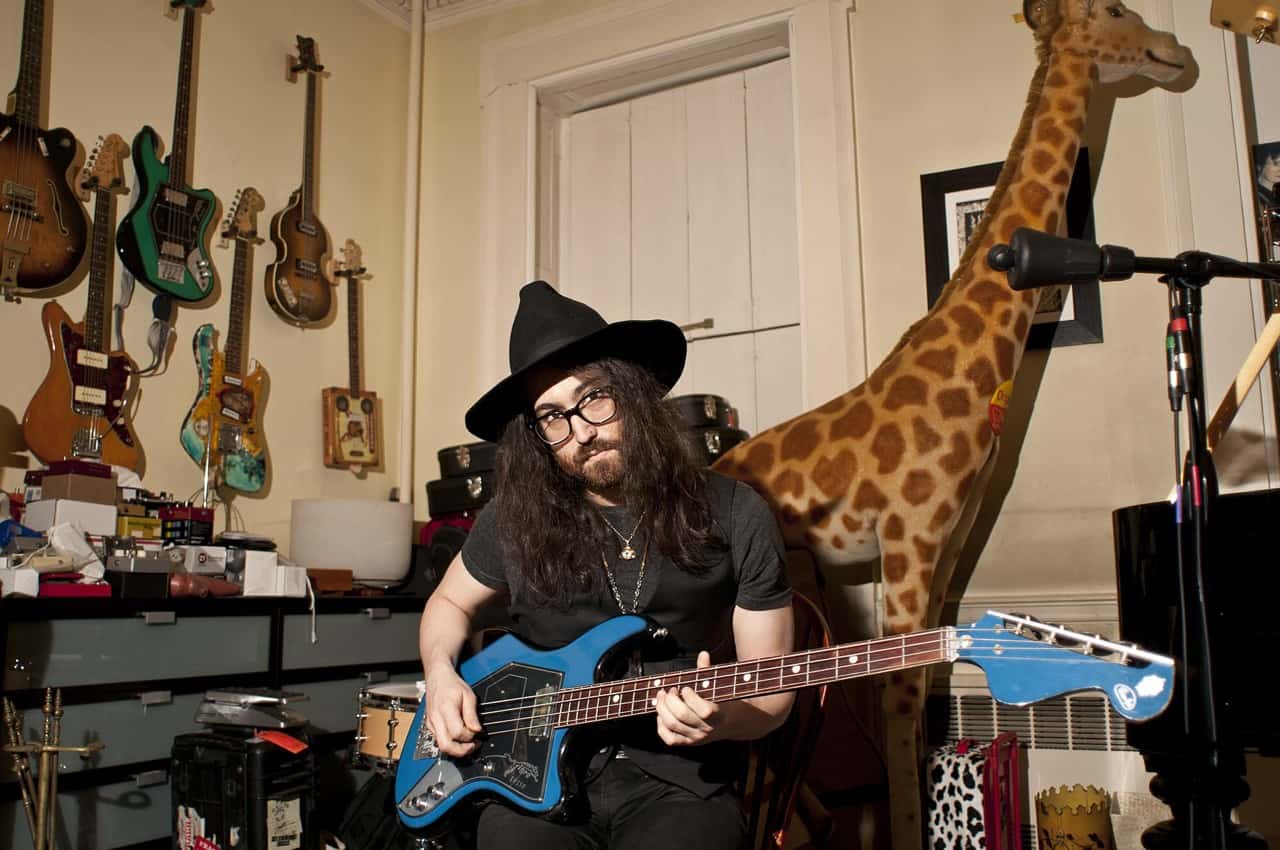
(Photo: Sacha Lecca) Sean Lennon in his home studio, 2014
Just saying hi to the crowd, or whatever.
Or just in silhouette, in the shadows, and I’m like, oh god. I’ve never been in that situation, to be honest.
Can I at least pick which 90 seconds I get to shoot?
Yeah. Well, you know, the funny thing is, that band, that first band that I shot in London, I love shooting them, I really like that band, and the last time I shot them, they said, it’s not first three songs, it’s the last three songs.
Yeah, that actually makes sense.
And I’m like, that’s awesome. Especially then the crowd is nuts already, everyone’s sweaty, and they’re playing their most energetic songs at the end, it makes total sense. And the pictures from that night from everyone in the pit were just like unbelievable.
Yeah, the first three songs seems like the worst three songs to photograph.
They’re just getting started, no one’s sweating, I hate when I turn around and they’re 5 songs in, and they start jumping around, and I’m like, come on man.
That’s something I noticed in your work, is that there’s a lot of motion, a lot of energy.
I love shooting definitely more energetic bands, and then to find the kind of moment in that action, I love doing that. But there are some bands that just stand there and play, and it’s harder to get a great photo if you can’t move around, that’s for sure. So yeah, I’m definitely attracted to, I mean also musically, too, attracted to very energetic bands, too.
Right.
Definitely if they’re jumping around, or lying down, they get very emotional, or jump into the crowd, that’s the best.
And next is something we ask of all our interviewees.
Oh, should have been prepared for this! Hahaha!
No, that’s the thing, we don’t want you to be prepared. It has to come from the gut!
Alright!
Do you prefer the process or the result, when it comes to your work? Be it as an editor or even as a photographer?
You know, I’ve read this in other interviews, so yeah, I should have been ready! The process or the result…well, honestly, let’s take editor first.
Okay.
I don’t know, it might be the process, the process is definitely very enjoyable, and the result often is also depends on a lot of other factors, whether it’s the amount of space you’re going to have, the design, resulting design. Also kind of everything going through a lot of other people, the other editors of the story, the managing editor, and so on. And sometimes maybe your favorite image doesn’t make it into the magazine. But the process in getting there, you’ve heard me describe, with glee, the diving through archives like that, and for me, that’s absolutely fascinating. I totally get off on that.
Ha!
And yeah, sometimes the result, it can be frustrating. I had a former boss at Newsweek, talking in terms of a weekly magazine, it’s basically expected to be, not so much be disappointed, most of the time, but to really have everything work the way you want it maybe once a month.
Oh wow.
So that’s one out of four issues, and that’s maybe talking about one particular story, whether it’s the way the assignment goes off, the result of the assignment, and then the way it’s used, the way it’s displayed, and probably the way it’s received. For all those things to come together, you’re going to be happy once a month. So we come out every two weeks, so that means once every two months I’m going to be super-pleased. Often, so I still think about that when I do my job, that you kind of just do the best you can and really push for the best stuff to go, in terms of your own opinion, I guess.
Yeah.
As a photographer, process or result; I think it might still be process. And maybe, because I feel I need to get better, I think if I tighten my edits up, I would be much more pleased with the result, I think. Like I said, this is a problem that a lot of photographers have where, I’m definitely, just before speaking to you, I was going through the images from last night, and I feel like, I didn’t shoot very much in only three songs. I don’t like to start pounding the shutter just to make sure I’m getting the most I can out of that, I’m really trying to look for things, so I didn’t end up shooting very much, but my edit is really wide, and I’m like, this can’t be right.
Ha!
So I’m going to go, after we hang out, I’m going to go through it again. To feel like, to have something that’s going to last, in terms of what I look at, maybe months or years from now. Or put in, say a book, I think should be something fairly iconic, and if I’m doing super wide edits like that, I’m not looking at it in that way.
Right.
So I don’t know. I’m always surprised when a photographer will shoot a show, and there’s one photo that comes out of it that’s amazing. Or like, I got to see Danny Clinch in action in the pit, because I shot Pearl Jam, first three songs, I like what I got, but then I went to see them without shooting the next time, and Danny’s friends with them and shoots them often, and so he had pit access for the whole show. And to see him hardly take a picture, just sort of watching and watching, grabbing something, then watching, then runs around and starts snapping around, was very inspiring. Even to see his demeanor, where there’s something amazing happening behind him, and like, whatever, it’s not in front of him, he’s doing something else. It was freaking me out the whole time, like, oh my god there’s something amazing happening!
You’re missing something!
But just to have that presence, he knows what he’s doing, let it happen. And then I haven’t seen his shots from that show, but I saw something a few years back when they played Chicago, and he sent some images to us, like goddamn, man, this stuff is so good. Obviously, too, that’s a band that he’s shot for years and years, he knows kind of what’s going to go down.
Right.
So definitely that’s a plus. For me, a lot of the bands that I shoot often I can behave that way.
It’s a comfort, and kind of an experience.
But the process of thinking about how you’re going to go about it, what you’re going to try and do, how’re you going to shoot it, maybe bring an analog camera this time, you know, all that stuff I just love, actually, and I love being at shows doing it, so definitely the process is good. Yeah!
Just maybe one or two more questions for you.
Yeah, let’s do this!
Something that I have been thinking a lot about in the past year or so, is where does representation comes into play, when choosing a photographer. Is that a part of your conversations when you’re dealing with photographers?
Oh wow! I mean, not necessarily. But I don’t think, I wouldn’t, well, to the point where I wouldn’t necessarily hire, say a female photographer just for the sake of her gender.
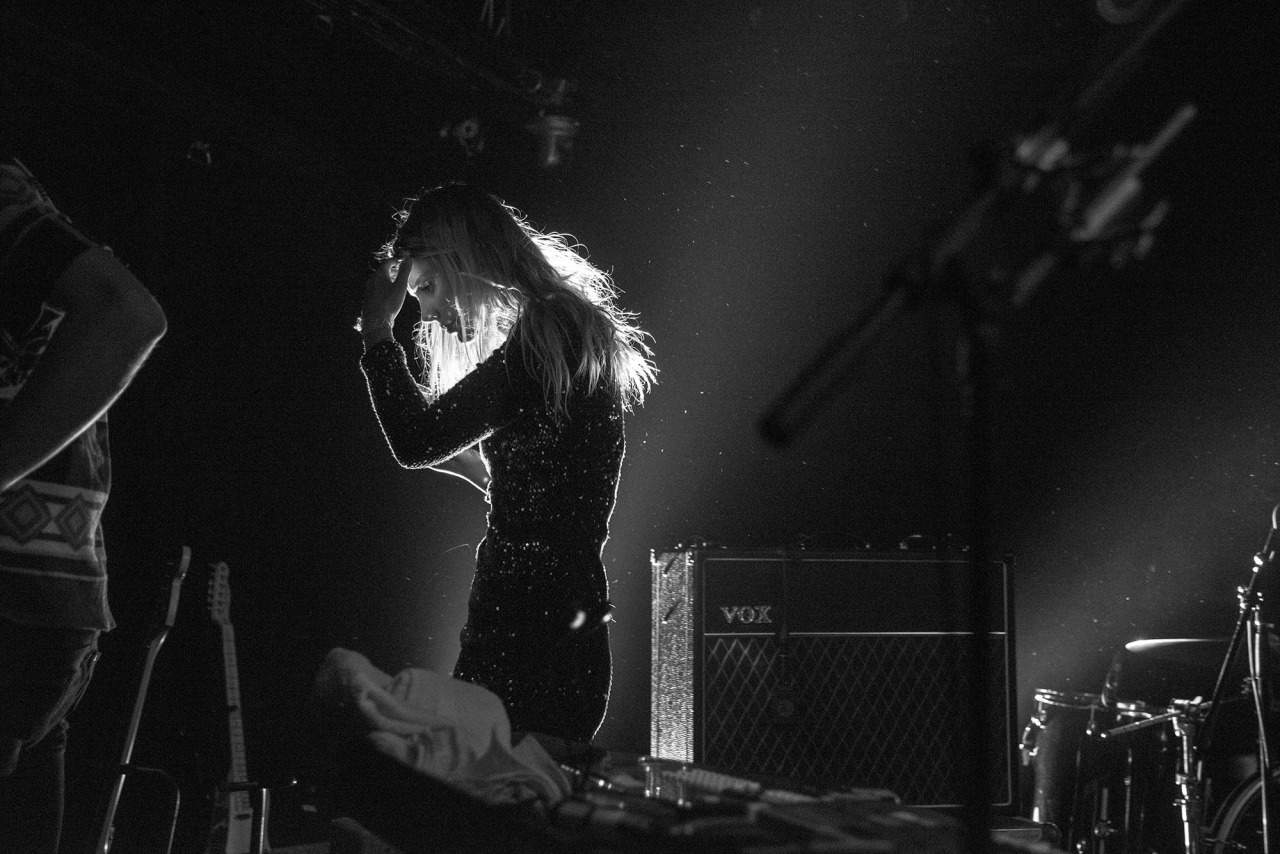
(Photo: Sacha Lecca) Wolf Alice at Le Poisson Rouge in New York, NY June 2015, for Rolling Stone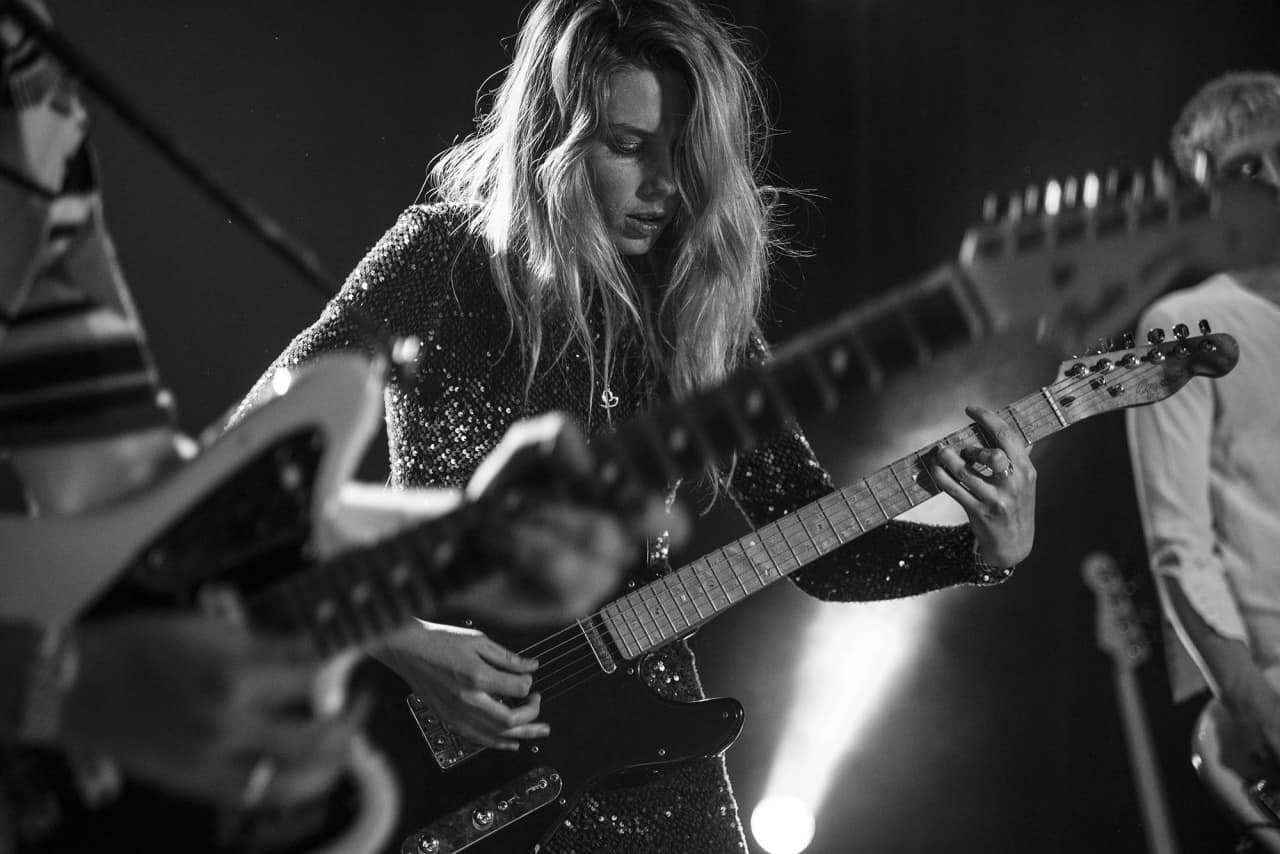
Right.
And likewise, with person of color, just for the sake of their race. I would say if there was like a, well…I’m just thinking about the photographers we use, and a lot of them are white males, for sure. But there’s definitely a lot of female photographers we use, and we’ve used in some crazy situations!
Heh!
But, I mean, to very accurately answer your question, and hopefully this doesn’t bother anyone, but the actual conversation of that does not happen very often.
Yeah.
There might be, you know, there’s definitely, there’s conversations constantly about certain photographers and the kind of work that they do already, and that it would make sense for us to use. There’s often like, photographers that shoot, for instance, men very well, or shoot women very well.
Right.
And so if they are primarily known for shooting guys, you know, and they wanted more of a beautiful portrait of a female singer, we wouldn’t necessarily use that photographer.
Right, right.
There’s, on some of the news stuff, we’ve had people in crazy, shady situations that were both male and female, we’ve used photographers, both female and male photographers because of the sensitive subjects that they cover, and we’re covering similar subjects, so it made sense to use them. Recently, we had a female subject that was had a kind of indie vibe, and the photographer that we used was a male, but those are the only kind of people he photographs, in a certain sense for that.
Right, right.
It’s really more about the subject and the kind of work that the photographers are going to do. Yeah.
We ask the challenging questions here!
Yeah, man, I mean, I…I don’t know, I don’t really think about it that way, I know that probably is…I know there’s a lot of discussion about greater equality in sort of the field.
Sure.
But I don’t think there’s anyone that’s overlooked, say, for those reasons, you know.
Right.
No, not at all. You know, it’s a hard enough place to sort of break into sort of the group of photographers that are often used to shoot assignments for Rolling Stone. It’s a very small list. It isn’t about any of those things, at all.
Right.
I know that it’s, there’s definitely issues where you know, the photo staffs, in general, used to be boys clubs, and it’s probably taken way too long to veer away from that, but we’re just sort of judging photographer’s work, just that when we’re assigning.
Sure.
So yeah.
And, you know, in listening to your answer and thinking about it, for us, we think of that as part of our job, to highlight photographers. Rolling Stone’s job is not necessarily to…you guys need photographers for work, for us, part of our goal is not just to run a site and have photographers, but to show…if we had a manifesto, that would be part of our manifesto, providing an accurate representation of the world of photography.
And speaking, and just thinking, just the people that we use fairly regularly, it is fairly diverse, I mean, except for a few photographers that have been with the magazine for a very very long time, who are white males, but there’s definitely female photographers who we’ve used and definitely, non-white photographers, too. And for the small group of very regular photographers, I don’t know. I don’t know if we hold up better than others. But I don’t know, I’ll think about that, I’ll definitely be thinking about that now.
Alright! Yeah. My work here is done, then! And I think that about does it, my friend. Thank you so much!
Thank you! I mean it’s an honor to be the first editor featured on this very excellent site, I really appreciate it.
Thank you!
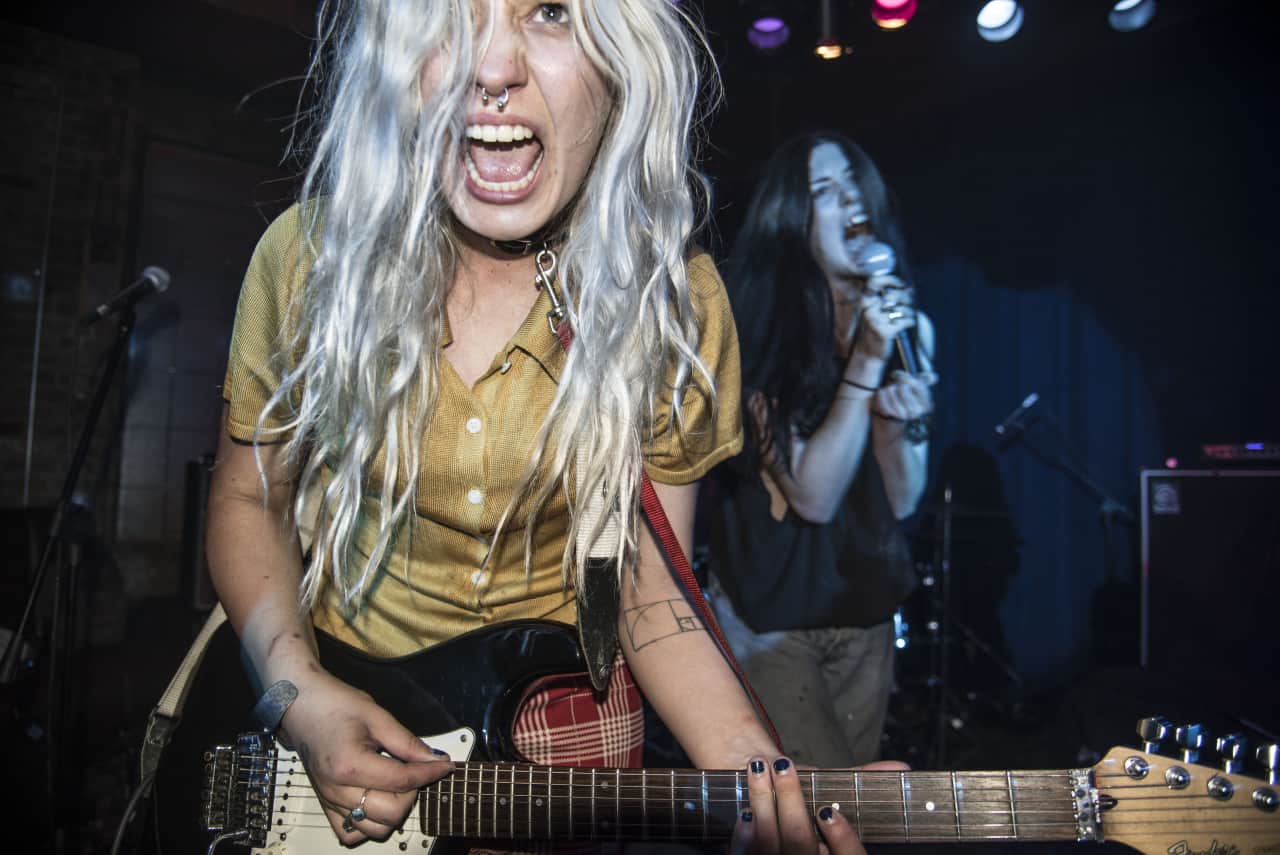
(Photo: Sacha Lecca) Surfbort, 2015 at the Good Room in Brooklyn.